There are televisions that come for testing, and you immediately think: “oh, just another average one, probably like many others.” And basically… that’s true. The TCL C7K doesn’t try to dethrone OLEDs, nor does it shout from the box “revolution!” Yet, after a few days of testing, it’s hard not to think: “wow, this is really good equipment.” And that’s exactly what the C7K is. The biggest asset of the C7K is its decent picture at a reasonable price – MiniLED and quantum dots do their job here. The colours are vibrant, the brightness satisfactory, the contrast impressive, and with the right settings, you can truly enjoy viewing in the best quality. The second strong point is the smoothness of motion – both in sports and games. Support for HDMI 2.1, variable refresh rates, 144 Hz, and a whole host of other features make gaming on this TV a pure joy. Then there’s Google TV, which – despite some minor shortcomings – provides access to nearly an endless library of applications. Voice control, quick access to YouTube, Netflix, AirPlay support – it has everything you need for everyday use. Are there downsides? Of course. The Google TV system can have moments of “hesitation,” and MiniLED – being MiniLED – can stumble on very complex film scenes. But these are details. After all, the C7K is a mid-range model – and in this class, it performs simply excellently. So if you are looking for a reasonably priced, modern television with Google TV that looks good, works well, and plays quite decently without ruining your budget – the TCL C7K definitely deserves your attention.
- Matching (Score)
- Our verdict
- TV appearance
- Where to buy
- Contrast and black detail
- HDR effect quality
- Factory color reproduction
- Color reproduction after calibration
- Smoothness of tonal transitions
- Image scaling and smoothness of tonal transitions
- Blur and motion smoothness
- Console compatibility and gaming features
- Input lag
- Compatibility with PC
- Viewing angles
- TV efficiency during daytime
- Details about the matrix
- TV features
- Apps
- Playing files from USB
- Sound
TCL C7K / QM7K vs Philips OLED820
Direct compare
C7K / Q7C / MQLED85K / C79K / C71K / QM7K
Available screen sizes: 50”
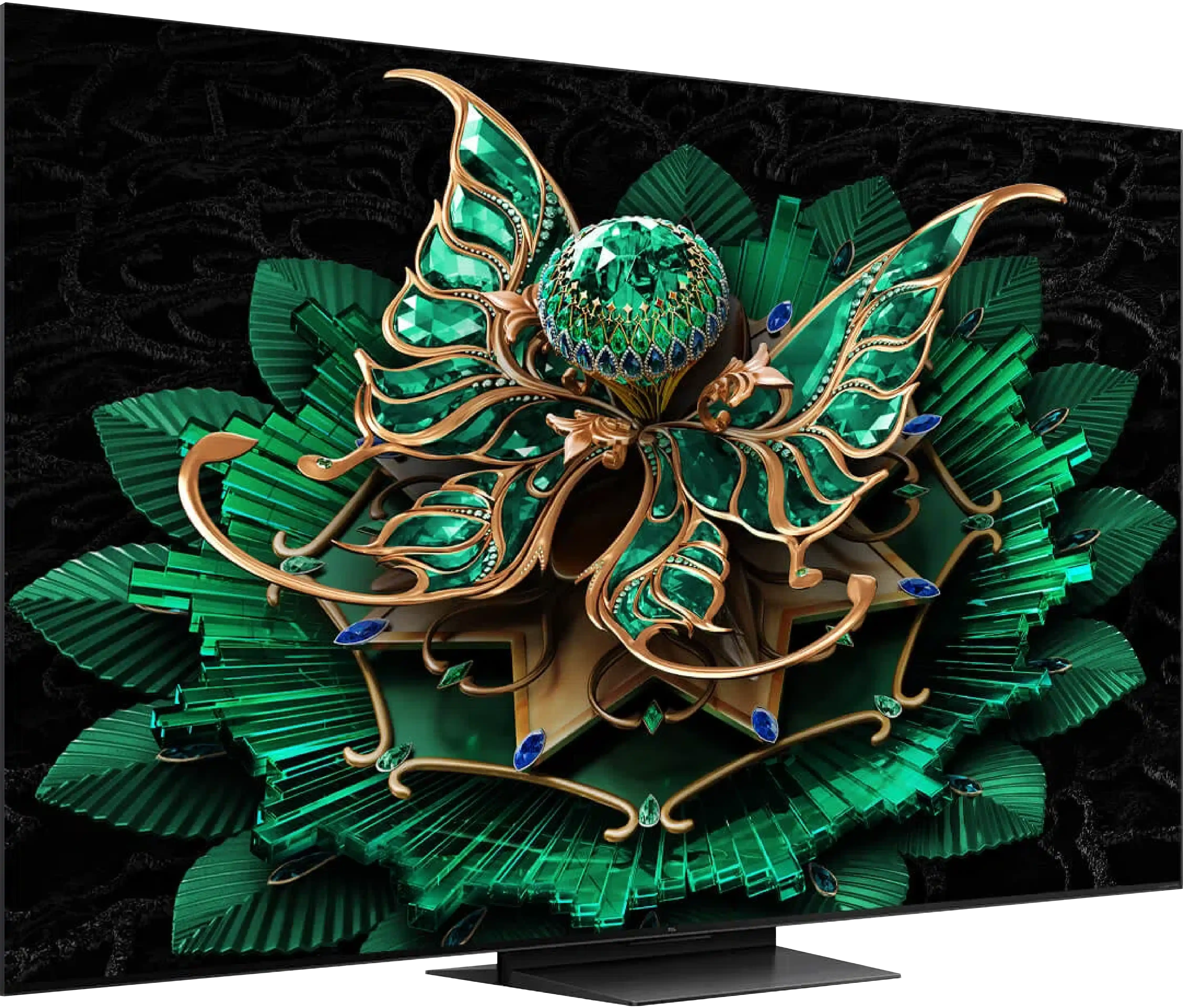

Panel type: LCD VA
Resolution: 3840x2160
System: Google TV
Model year: 2025
Complete the survey to find out the result

Panel type: WRGB OLED
Resolution: 3810x2160
System: Google TV
Model year: 2025
Complete the survey to find out the result

Overall rating
7.2
8.0
Movies and series in UHD quality
6.7
8.3
Classic TV, YouTube
6.5
8.6
Sports broadcasts (TV and apps)
6.6
8.5
Gaming on console
8.5
9.4
TV as a computer monitor
8.4
6.5
Watching in bright light
6.1
5.7
Utility functions
7.3
6.8
Apps
9.6
9.6
Sound quality
7.0
7.7
Complete the survey to find out what fits your preferences
Advantages
Very good black - VA panel with a large number of Mini-LED zones
High brightness in HDR - over 1000 nits
Excellent for gamers - HDMI 2.1, low input lag, VRR, ALLM, etc.
Good motion smoothness - 144Hz panel
Supports multiple HDR formats: HDR10, HDR10+, Dolby Vision
Google TV operating system with access to a vast array of applications
Pleasant sound from built-in speakers
Ideal contrast and black thanks to the WOLED panel
High HDR brightness (up to 1300 nits) and wide coverage of the DCI-P3 colour palette (99%)
Support for multiple HDR formats including Dolby Vision and HDR10+
Great motion smoothness, no motion blur, refresh rate up to 144 Hz
Full support for gamers: HDMI 2.1 (2 ports), VRR, ALLM, HGiG, Dolby Vision in games, low input lag
Ambilight that has a real impact on the perception of the image and distinguishes the television from the competition
GoogleTV system with a vast application base and excellent voice assistant
Extras including: Backlit remote control and swivel stand
Support for Dolby Atmos and DTS:X audio formats
Disadvantages
Google TV can operate with minor stutters
No USB recording and PiP functionality
Only two HDMI 2.1 ports (with 2 consoles and a soundbar we are forced to "juggle" with the cables)
Lack of many classic "TV" functions, e.g. recording to USB or PiP mode, infrared remote may be irritating
Slight issues with colour blending (much better than last year but far from the competition)
Problems with font readability when working with PC (lack of full support for Chroma 4:4:4)
Our verdict
Philips OLED820 is a very successful and significant step forward compared to last year's model, the OLED 819. For many people, the main reason for purchase will, of course, be Ambilight: the multi-coloured lighting system that distinguishes Philips televisions from the competition. It's not hard to see why, as it made a huge impression on us as well. It's not just an impressive gadget, but a real addition that can transform the experience of the content being viewed and add depth to it. However, Ambilight should not overshadow what the OLED820 offers as a screen. We have almost infinite contrast, high brightness in HDR films, and excellent colour reproduction, which improves even further after slight tweaking or professional calibration. This set guarantees one of the best images that can currently be found on the market, and on top of that, we are aware that the television offers something unique and unattainable anywhere else. It is also a device that performs well in gaming. The 144 Hz panel and HDMI 2.1 ports open up access to the full potential of next-generation consoles, and the low input lag ensures that gameplay is exceptionally responsive. The operating system – Google TV – also deserves praise. It is a much better solution than the proprietary Titan OS found in lower models of Philips, such as the OLED770. This is a serious argument for paying extra for this model. A larger library of applications, a more efficient voice assistant, and fewer system errors translate into a distinctly better daily experience. Of course, the Philips OLED 820 is not free from minor flaws – there are some shortcomings in the software, and certain functions could be better refined. Nevertheless, the overall presentation is very solid. Perhaps the OLED820 is not a revolutionary television, but it is a very successful and well-balanced proposition in Philips's offering. It combines excellent image quality, a full set of functions for gamers, and a unique addition in the form of Ambilight. If you are looking for a solid OLED in the mid-range that, aside from good image quality, offers something distinctive and simultaneously exceptional, the OLED820 should be high on your shopping list.
TV appearance
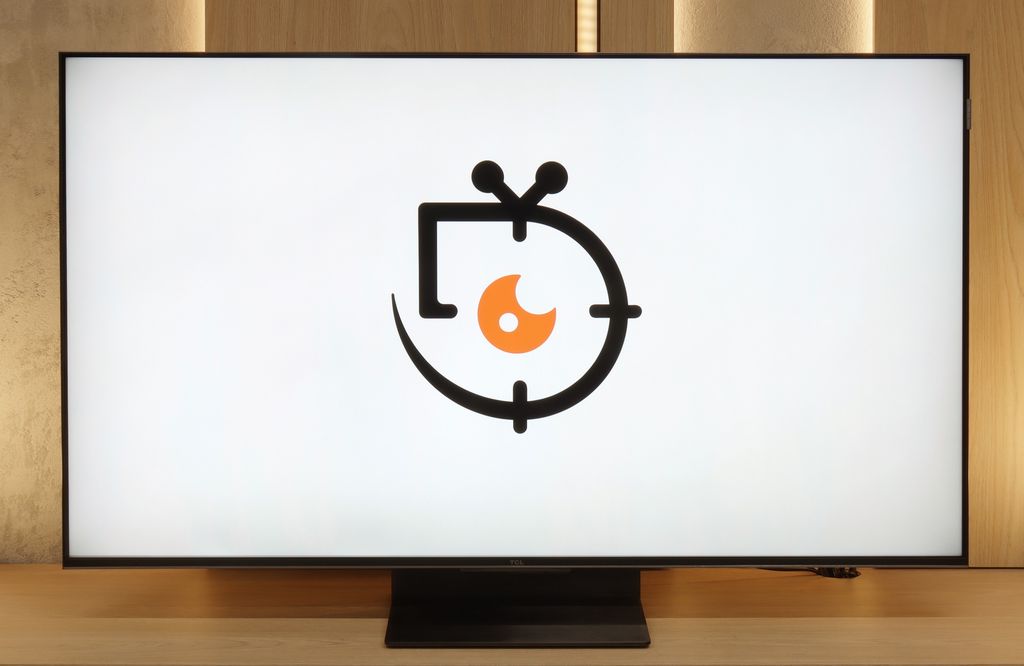
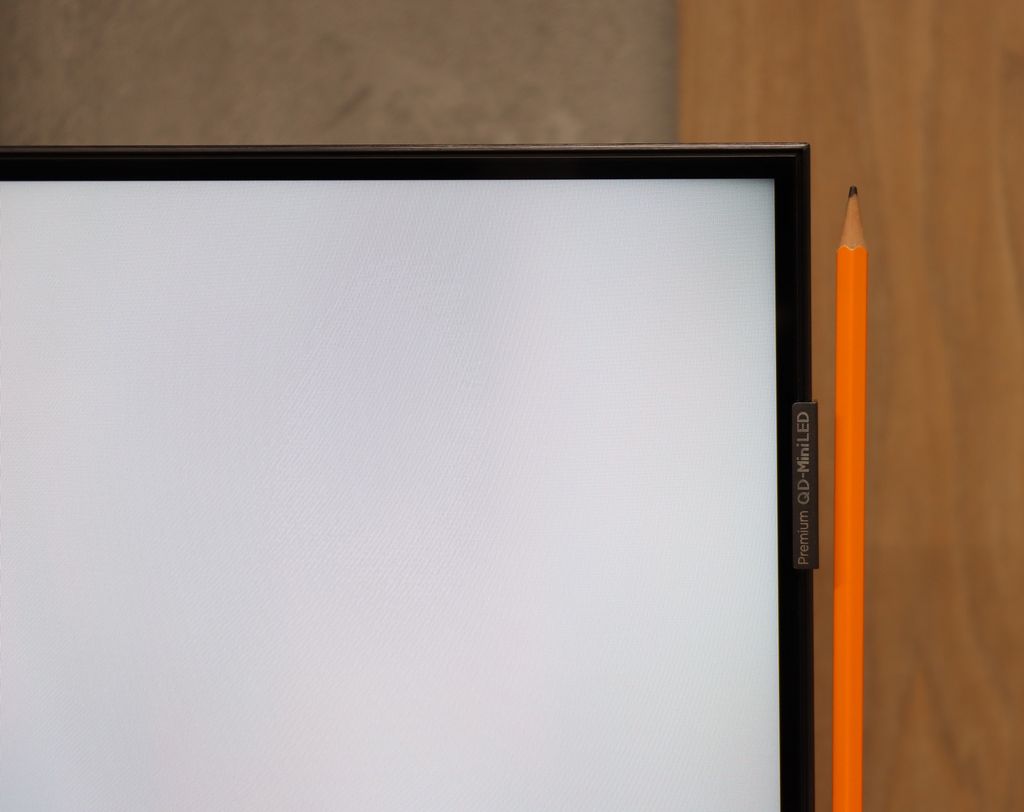
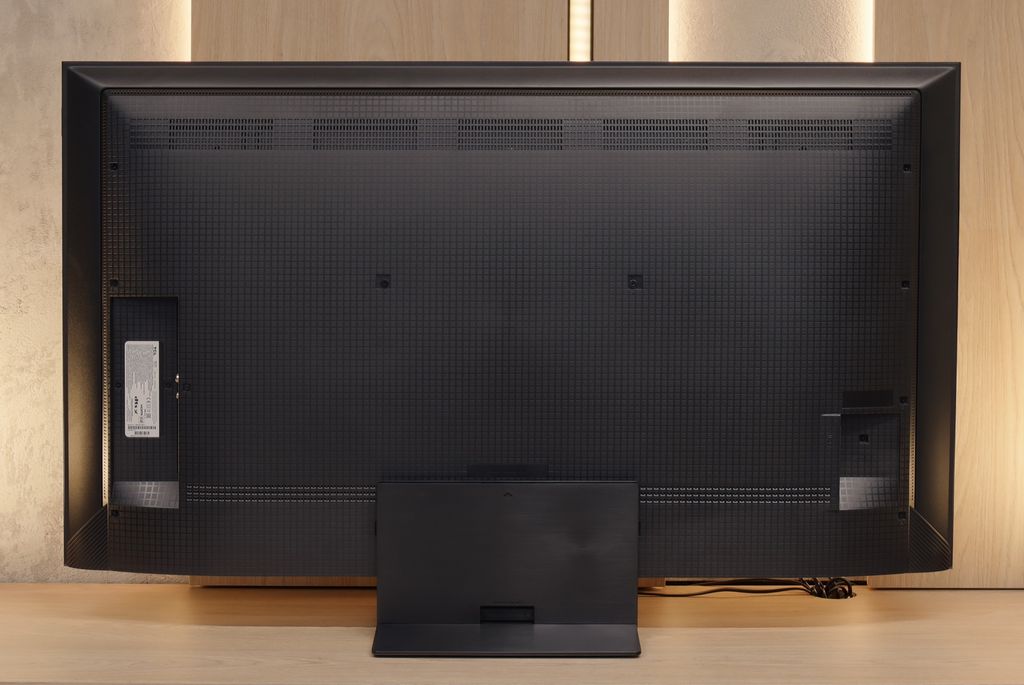
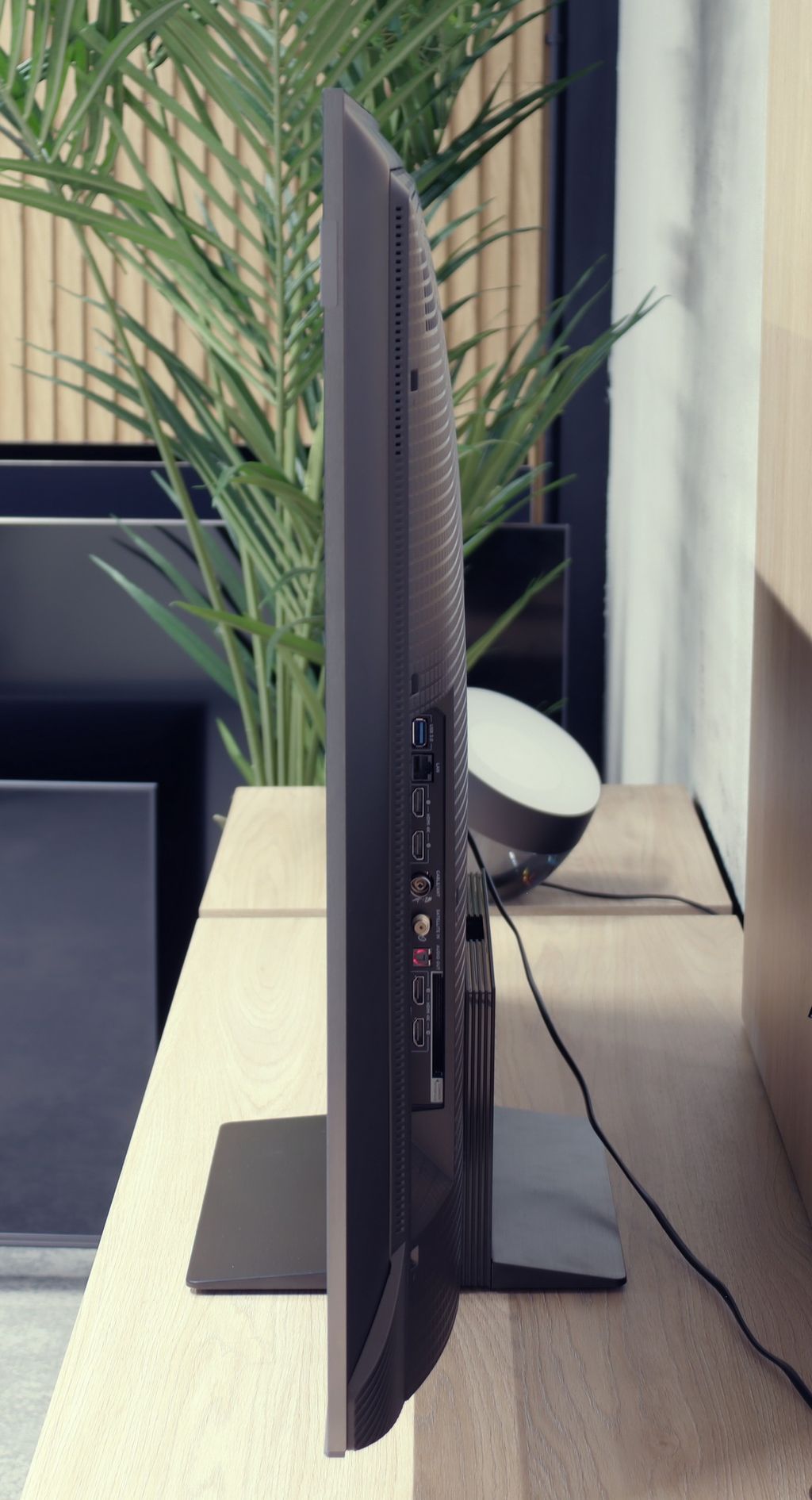




Contrast and black detail
7.1/10
10/10
Local dimming function: Yes, number of zones: 336 (14 x 24)
Contrast:

Result
161,000:1

Result
18,750:1

Result
13,150:1

Result
6,300:1

Result
4,200:1

Result
∞:1

Result
∞:1

Result
∞:1

Result
∞:1

Result
∞:1
Halo effect and black detail visibility:
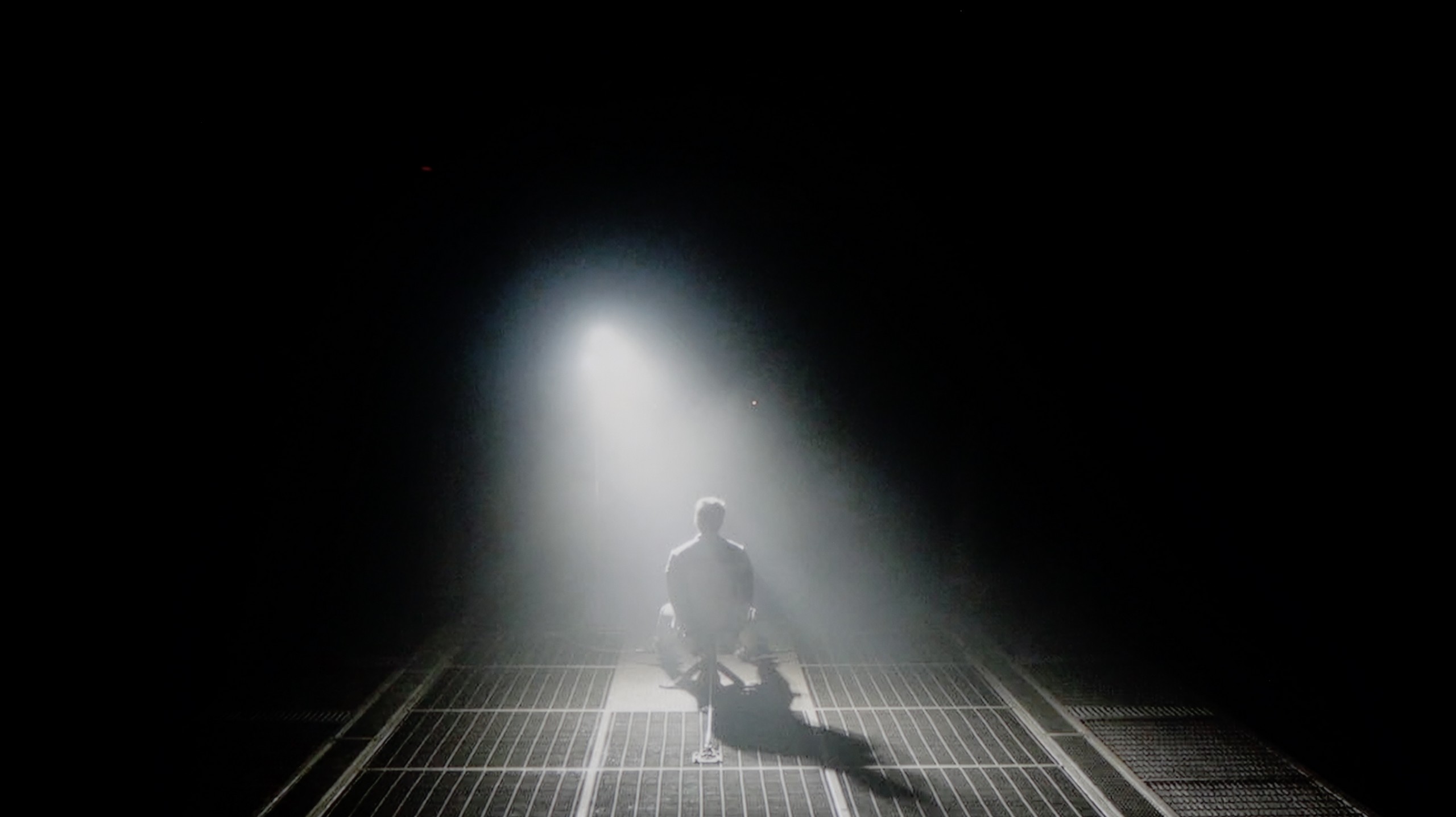

The 50-inch TCL C7K that we tested surprised us right from the start – it’s the smallest model in the series, yet it comes equipped with a VA panel with MiniLED backlighting and – attention – as many as 336 dimming zones. For comparison: many significantly larger televisions from higher tiers would be eager to boast such a number. Here we have it in the 50-inch version. Sounds promising, doesn’t it? So how does this translate into real movie-watching experiences? In the vast majority of tested scenes – very well. The contrast was high enough that it reached even six-digit values in measurements, which practically means very deep blacks and well-separated highlights. In scenes from films like The Revenant or Oblivion, the effect was impressive, matching the best LCD screens in this class.
However, not everything went perfectly. Despite the impressive number of zones, managing them was not always exemplary. In more complex scenes, where small light sources or a high level of detail appeared, the television had issues with the so-called halo effect (a glowing halo around bright objects) or overly aggressive dimming of the image. In such situations, contrast could either collapse due to overexposure of certain zones or, conversely – details in bright areas disappeared because the zones suppressed the light too much. Nonetheless, it is worth noting that in the vast majority of scenes, the contrast was more than satisfactory. And taking into account the size of the television and the price, the final effect will satisfy not just average users.
Contrast and black are the domain of OLEDs, and the Philips OLED820 is no exception. The applied WOLED panel from LG Display functions just like in the LG C5 models or the Samsung S90F, providing exactly what we expect – perfect black and infinite contrast. Whether we are watching challenging scenes full of intricate details or simpler shots immersed in uniform black, the television always performs flawlessly. It separates light from darkness with surgical precision, creating an extraordinary sense of depth in the image. And while one can debate various technologies, in this category, OLED simply reigns supreme, and the Philips OLED820 only confirms this rule.
HDR effect quality
5.4/10
7.5/10
Luminance measurements in HDR:

Result
1051 nit

Result
185 nit

Result
454 nit

Result
200 nit

Result
836 nit

Result
1035 nit

Result
1235 nit

Result
1356 nit

Result
1315 nit

Result
521 nit
Scene from the movie “Pan” (about 2800 nits)


Scene from the movie “Billy Lynn” (about 1100 nits)


Static HDR10


Dynamic: Dolby Vision
Dynamic: Dolby Vision


HDR luminance chart:
Philips OLED820
HDR luminance
Luminance of RGB colors
TCL C7K / QM7K
HDR luminance
TCL C7K is one of the brightest MiniLED televisions in its price range. Under the best testing conditions, the screen managed to achieve over 1200 nits, resulting in impressive, at times almost blindingly bright scenes. And most importantly – this is not just a theory based on measurements. In practice, the brightest parts of films can shine with true cinematic grandeur. Fans of home HDR cinema should be truly satisfied.
The impression is excellent, especially in scenes with large areas of brightness – a white sky, explosions, sun reflections, or magical sunsets can surprise with an intensity of light that is rarely seen in this price range.
However, it gets a bit worse when more challenging scenarios appear on the screen, as described when discussing contrast – that is, images full of details, with small, bright elements on a dark background. In such cases, the C7K often decides to preserve black levels at the expense of brightness. An example? Scenes from the films Sicario 2 or Life of Pi, where small light sources (like a distant lantern) can become less visible, and details in the lights are simply dimmed or blend into the background.
For many viewers, this may be an acceptable compromise – as we achieve deep black levels and a pleasing plasticity of the image. Nevertheless, it is worth being aware that the visibility of small details in bright areas is not this model's strongest suit. It is simply a technological limitation that still exists – even with over 300 zones.
When it comes to HDR quality, the Philips OLED820 uses the same class of WOLED panel found in its biggest rivals – the LG C5 and Samsung S90F. This means we can expect really solid results. This year, mid-range OLED panels can exceed the threshold of a thousand nits, and the tested model reaches around 1300 nits in some films. This is an outstanding result, allowing the director's vision to be conveyed with immense precision, as this is the brightness range in which contemporary productions are mastered. Of course, there are situations where even the OLED820 has to compromise. Full-screen scenes filled with white, like those in the film The Meg, can drop brightness to 400–500 nits, which clearly weakens the effect. This is a characteristic of OLED technology that has yet to be fully eliminated. Despite this limitation, it is hard not to appreciate the HDR in this model – high luminance and a wide DCI-P3 colour gamut coverage of 99% make the image simply look fantastic.
Factory color reproduction
6/10
6.7/10
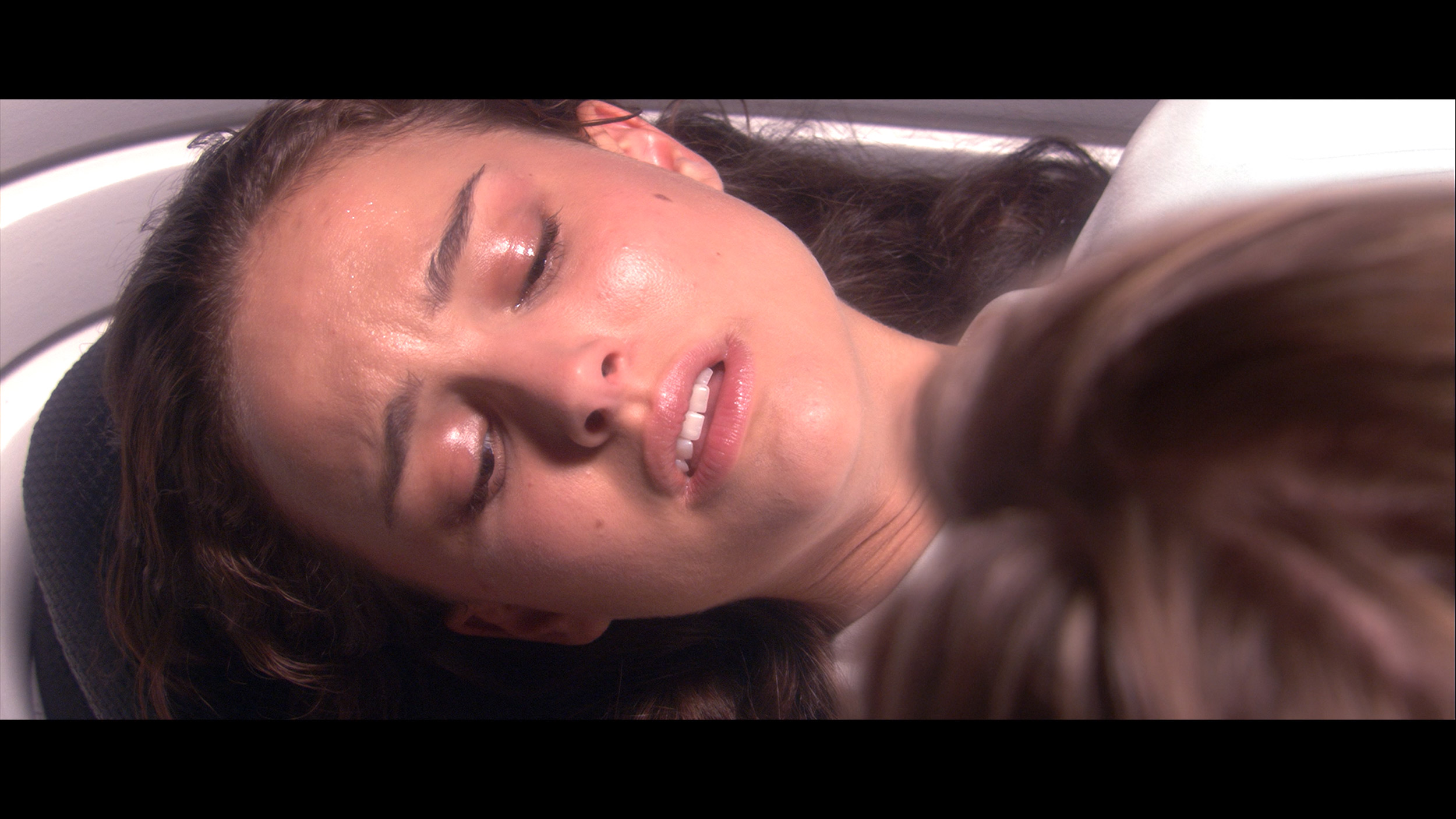
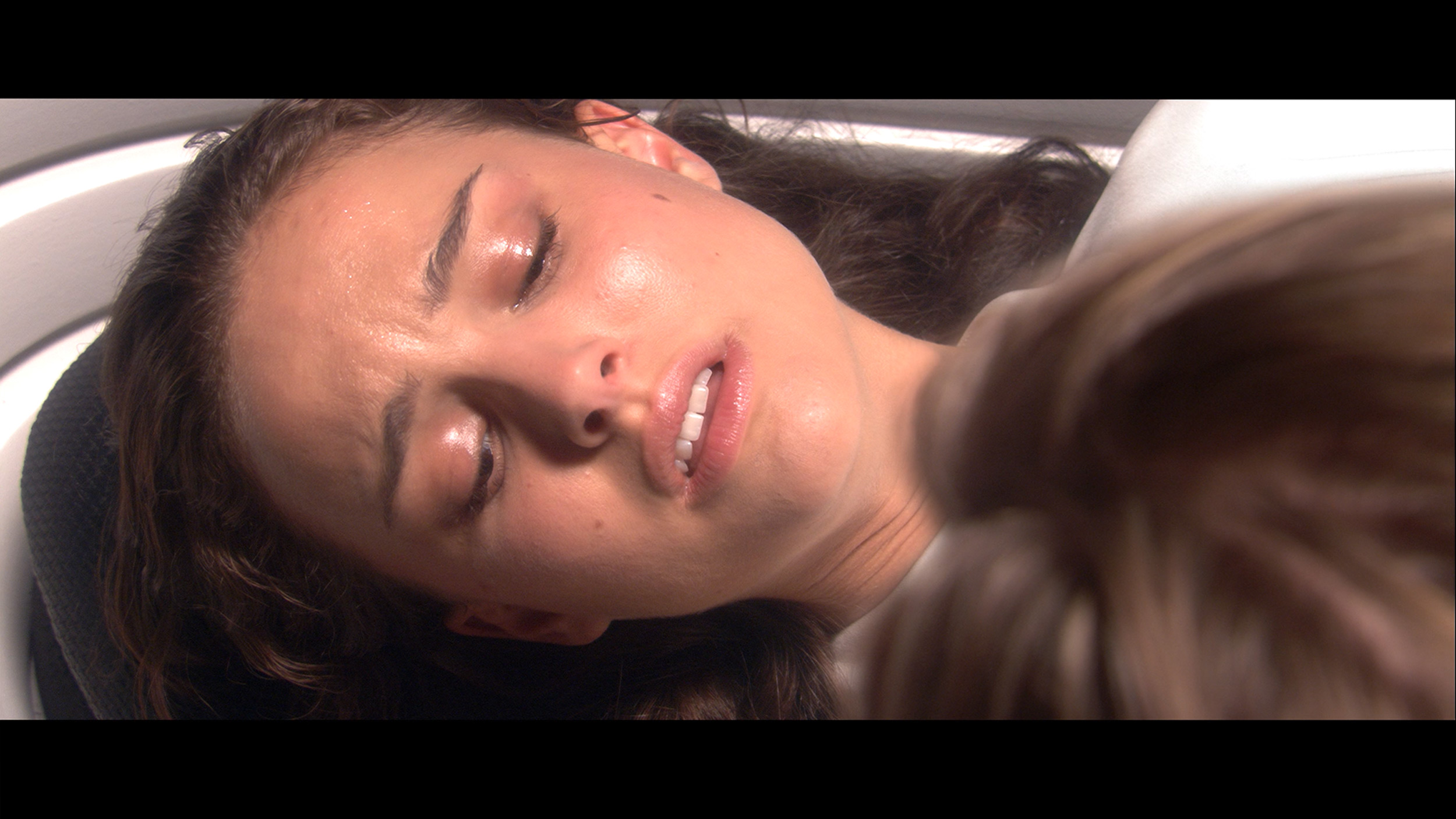
Factory Mode
After calibration


Factory Mode
After calibration
A new feature in TCL televisions for 2025 is the long-awaited Filmmaker mode, which until now has been found in most competing brands. This is great news, as this mode is considered to be the truest to the original vision of the creators and is often recommended by enthusiasts of good picture quality. Unfortunately, as is often the case, the mere presence of this mode does not guarantee perfection. The Filmmaker mode in the TCL C7K is not without its flaws. There can be criticism of the incorrect white balance, particularly a slight dominance of blue, which resulted in cool, somewhat greyish skin tones. But that was not the biggest issue. The main complaint was the excessive brightness exposure, which is clearly visible on the gamma and EOTF graphs. The image was simply too bright, at times even blown out, which affected not only the texture of scenes but also the overall viewing experience. Some details were simply lost, and the entire image looked as if someone had slightly overcooked the brightness slider. As always, we decided to check what could be extracted from this after calibration. And that’s where it started to get really interesting…
The colour reproduction in the factory settings really surprised us, and positively so. The Philips OLED820, switched to Filmmaker mode, immediately showed that it was quite well tuned in terms of colour. The white balance was relatively accurate, though there was a slight deficiency in the blue hue, which occasionally gave the image a slightly yellowish tint. However, this is not a flaw that particularly detracts from everyday viewing. A bigger issue arose with the brightness characteristics. The gamma curve clearly deviated from the ideal, with the line below the expected values, causing the image to be excessively brightened, and the colours looked as if they were covered with a light milky filter. This effect was also noticeable in tests using the Colour Checker pattern, where more pronounced errors appeared.
Color reproduction after calibration
7.5/10
9.3/10




After calibration, the TCL C7K showcased itself in a really good light, especially when it comes to SDR content. We managed to precisely tune the white balance, colour gamut, and brightness characteristics to the point that colour errors on the ColorChecker palette dropped below a value of 2. For the uninitiated – this is nearly a perfect result, which means that the image is very close to what the creators intended. Unfortunately, the situation was worse with 4K HDR content. Although we managed to gently stabilize the white balance and correct its previous errors, it was still evident that the television has certain "MiniLED traits," especially in brightness management. When we checked how the C7K handled the EOTF curve on actual film scenes, rather than just on synthetic test patterns, it turned out that the screen still tends to slightly brighten the entire image. This impacts the overall experience – blacks lose some depth, and the image becomes less contrasty than it should be. Despite these minor shortcomings in HDR content, the overall reception of materials – especially in SDR – is truly very good. After calibration, the C7K can display an image that can compete successfully with much more expensive models. Good colour tuning, natural skin tones, and pleasant brightness make movie sessions and everyday viewing of content more than satisfactory.
After calibration, both the Filmmaker mode and the gaming mode gained a lot. A slight adjustment of the white balance and an improvement in brightness characteristics produced excellent results in SDR content – the image looked almost perfect, natural, and very close to reference. In the case of HDR materials, the situation was similar, the colours were presented wonderfully, and it was hard to find anything to criticise. However, we noticed a certain feature, which we already pointed out when comparing scenes from the film Billy Lynn. The analysis of the EOTF curve showed that the television has a slight tendency to dim details in the blacks, so the darkest parts are not always displayed exactly as intended by the director. Nevertheless, the effect after calibration is stunning, and the OLED820 is emerging as one of the more interesting screens in its class. It just needs a little pampering, and there really is nothing to worry about.
Smoothness of tonal transitions
8.6/10
6.5/10




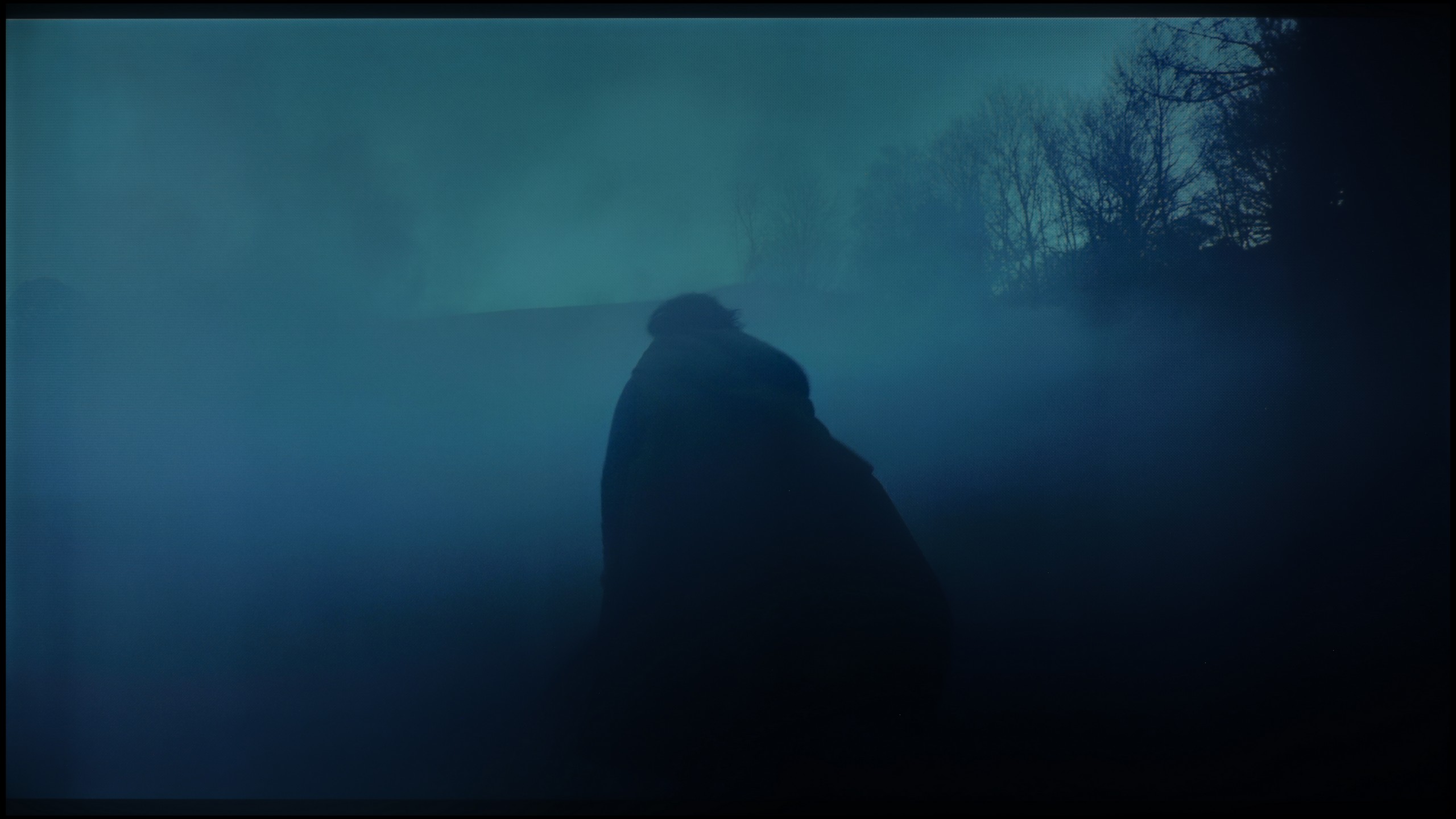







The TCL C7K handles colour gradation very well – in most of the tested scenes, tonal transitions were smooth, and colours blended together without visible outlines or the artificial "blot" effect. In everyday use, it's hard to find anything to criticise – the picture looks natural, without annoying transitions or digital artifacts. Certain limitations only arise in very dark tones – particularly in a heavily muted grey palette, where the television may struggle to reproduce the ideal gradation. But this is absolutely understandable, as even many significantly more expensive models in this regard simply falter. Fortunately, these situations are rare and do not significantly impact the overall impression.
The fluidity of tonal transitions is unfortunately the Achilles' heel of the Philips OLED820. During testing, we noticed slight issues with colour blending – both in bright and darker scenes, one can perceive distinctive banding that detracts from the naturalness of the image. It must be acknowledged that compared to last year's OLED 819 model, there is a significant improvement, but nevertheless, the competition performs better in this category.
Image scaling and smoothness of tonal transitions
5.5/10
7/10
Smooth transition function
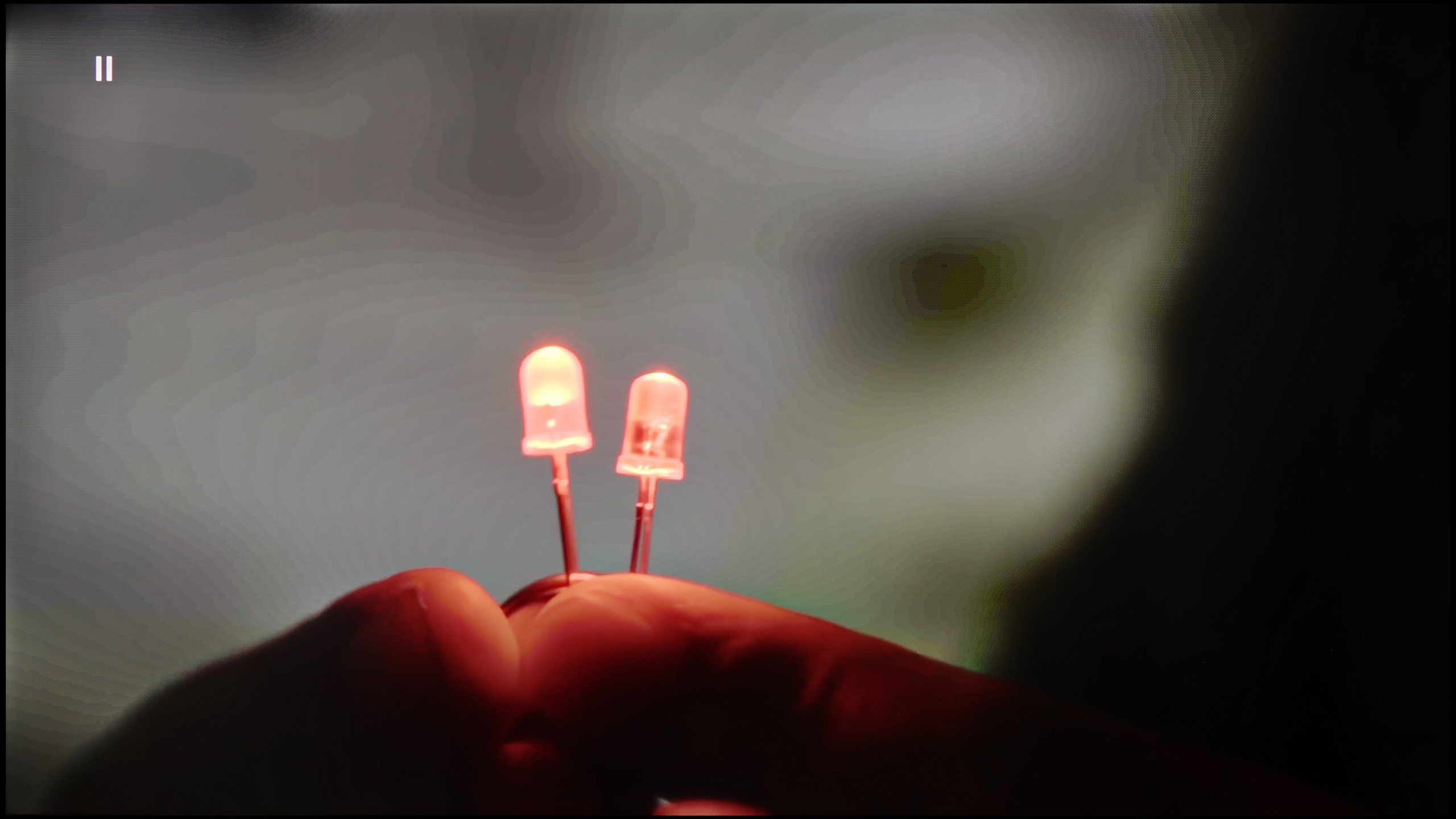

Image without overscan on the SD signal


TCL C7K is equipped with a feature that, according to the manufacturer, is meant to smooth out unwanted colour transitions – a sort of rescue for less successful tonal shifts. It is called "Gradual Smoothing" and… well, it sounds ambitious, but in practice it works very poorly. Regardless of whether we set it to a low or high level, the difference is minimal. Worst of all, the feature can cut out elements from the picture that should be there. Fortunately, film grain remains untouched, so at least it doesn’t smooth everything indiscriminately, but still – it’s better to simply turn this option off.
When it comes to scaling lower resolution content, it is somewhat better. SD and HD materials look quite decent, although at times we had the impression that the image loses sharpness and becomes too soft – as if something took away its definition. Fortunately, with very low sources (e.g. 576p), there was no overscan effect, meaning the picture was not artificially cropped – everything fit on the screen as it should.
Fortunately, the earlier effects of the mentioned posterisation can be quite effectively mitigated. The "distortion reduction" function set to a medium level deals with unwanted colour banding, improving the smoothness of tonal transitions. It does happen that it works a bit too aggressively and also smooths out some details – such as minor skin imperfections of the actors – but nevertheless, it can be considered worth using without substantial compromises. The upscaling in the OLED820 also performs quite well. The test image with the model is exceptionally soft, sometimes even too much so, although this can be rectified by slightly boosting the sharpness in the picture menu – this is really a matter of individual preference. The absence of overscan issues with very low-resolution content is also commendable, meaning we don't have to worry that the image will be unnecessarily cropped.
Blur and motion smoothness
8.1/10
8.5/10
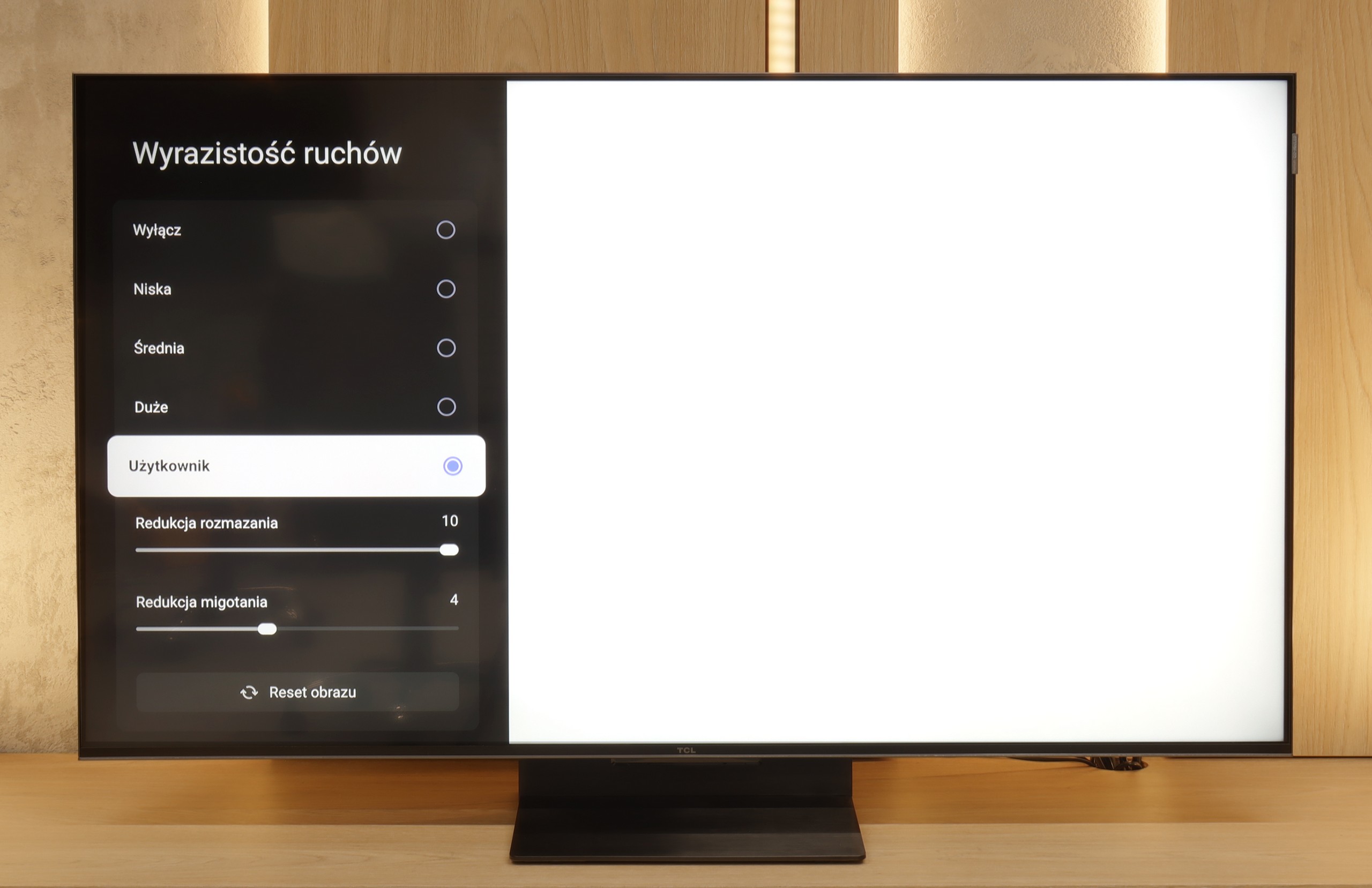

Blur (native resolution, maximum refresh rate):


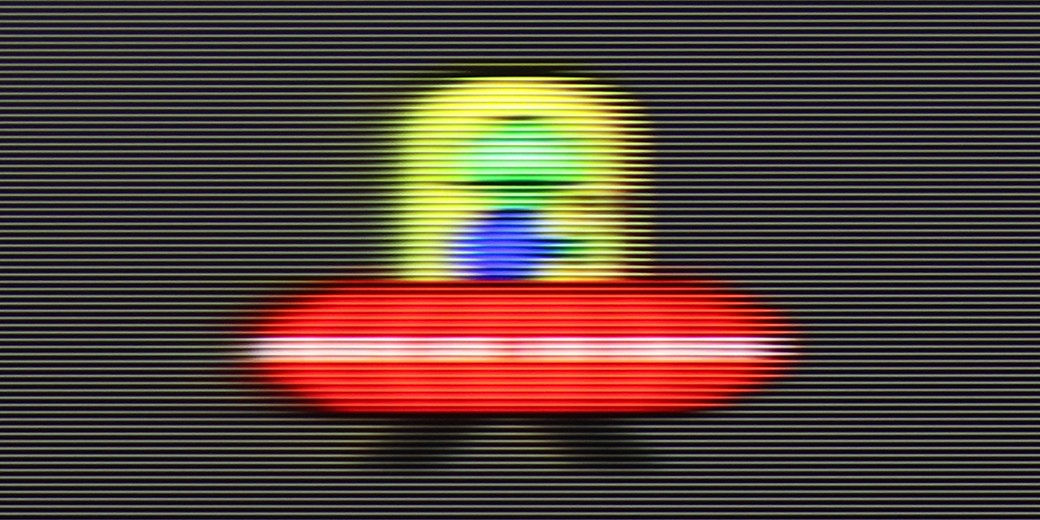



Blur (BFI function enabled):



Smużenie (4K 144Hz):



Smużenie (4K@144Hz):



The TCL C7K handles motion fluidity really very well. The matrix used in it offers a refresh rate of 144 Hz, which in itself suggests that this television is more than just a regular "60 Hz" panel. Furthermore – if we connect the C7K to a computer and set the resolution to Full HD. But we'll write more about this in the paragraph about gamers and PC collaboration. Returning to everyday use – both sports and films look very good here. Thanks to the fast panel and well-functioning motion smoothing, the C7K is great for watching matches, but also for movie screenings. In the menu, we find two sliders – motion blur reduction and flicker reduction – which allow us to adjust the fluidity effect to our own preferences. At lower settings, we get a more cinematic effect, with slight stuttering motion. At higher settings – the picture becomes more theatrical, fluid to the point of excess. Everyone has their own preferences – anyone can set it to their liking.
The fluidity of motion is an area where OLEDs always shine, and the Philips OLED820 confirms this rule. The panel itself offers a refresh rate of 144 Hz, which primarily benefits PC gamers, but even with standard television sources or consoles, where it operates at 120 Hz, the motion is fast, sharp and simultaneously smooth, without signs of blurring. This is thanks to the remarkable response time between pixels, which maintains image clarity in every dynamic scene. The manufacturer has also added its own smoother called "Motion Style". In the menu, we find two sliders – the first, responsible for fluidity, allows adjustments to the number of artificially added frames in films. This way, we can choose a raw, cinematic character with a distinctly visible film frame or a more theatrical image with smooth motion. The second slider is for motion blur reduction, particularly useful in sports broadcasts. Here, we definitely recommend setting it to the maximum value, as the effect is truly excellent.
Console compatibility and gaming features
9.8/10
9.8/10
- ALLM
- VRR
- VRR range48 - 144Hz48 - 144Hz
- Dolby Vision Game Mode
- Correct implementation of HGIG
- 1080p@120Hz
- 1440p@120Hz
- 4K@120Hz
- Game bar
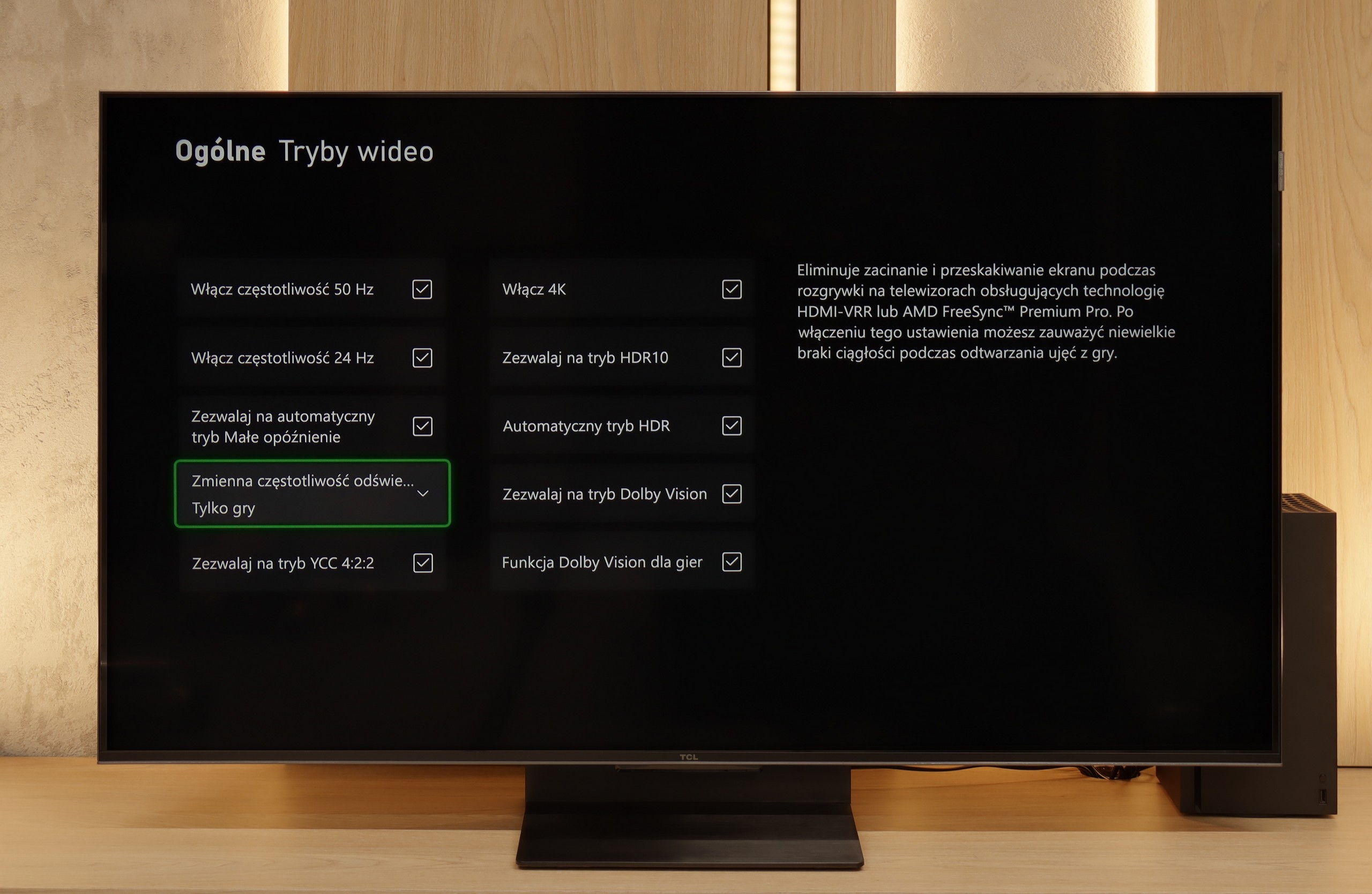

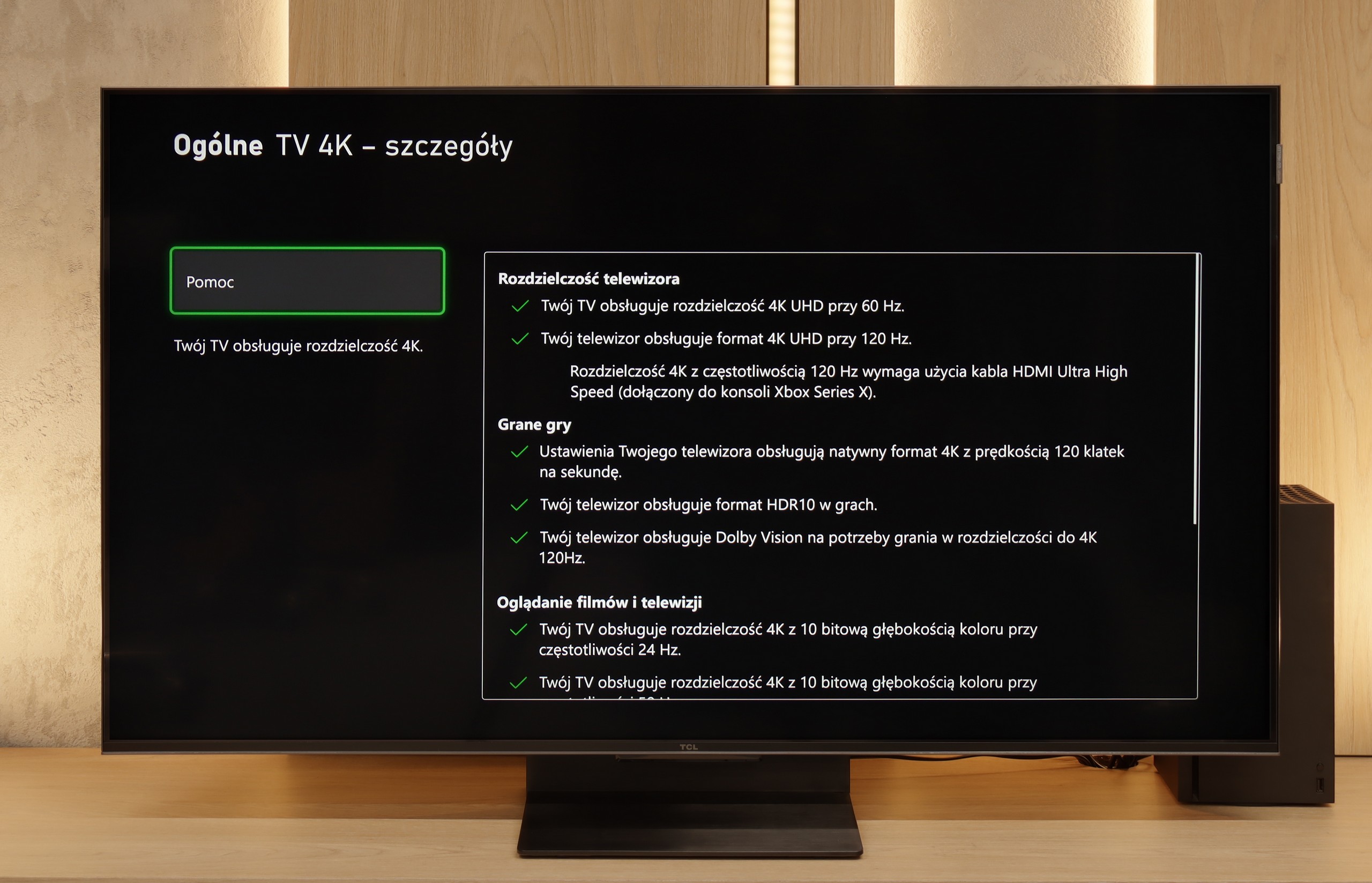

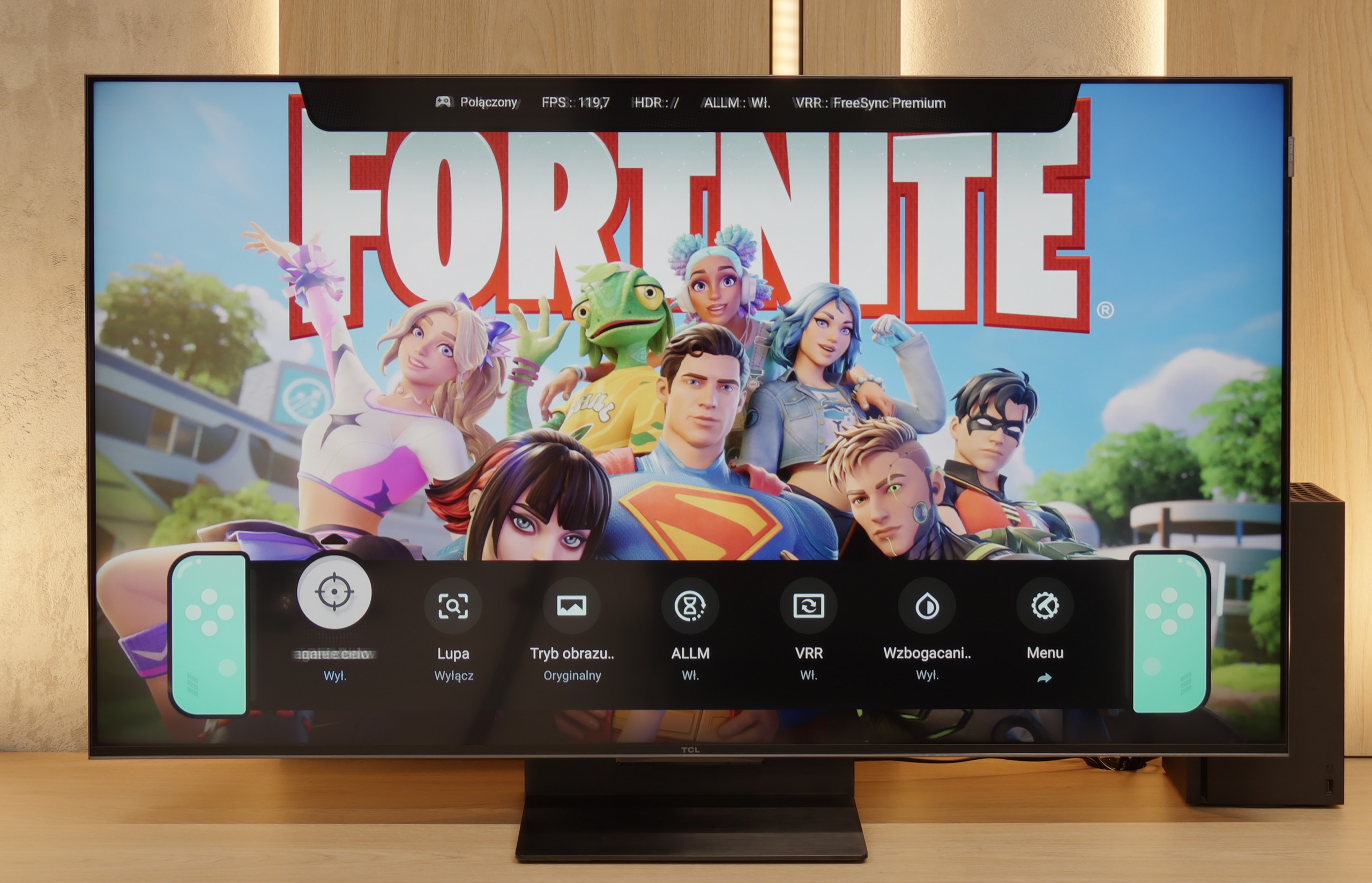

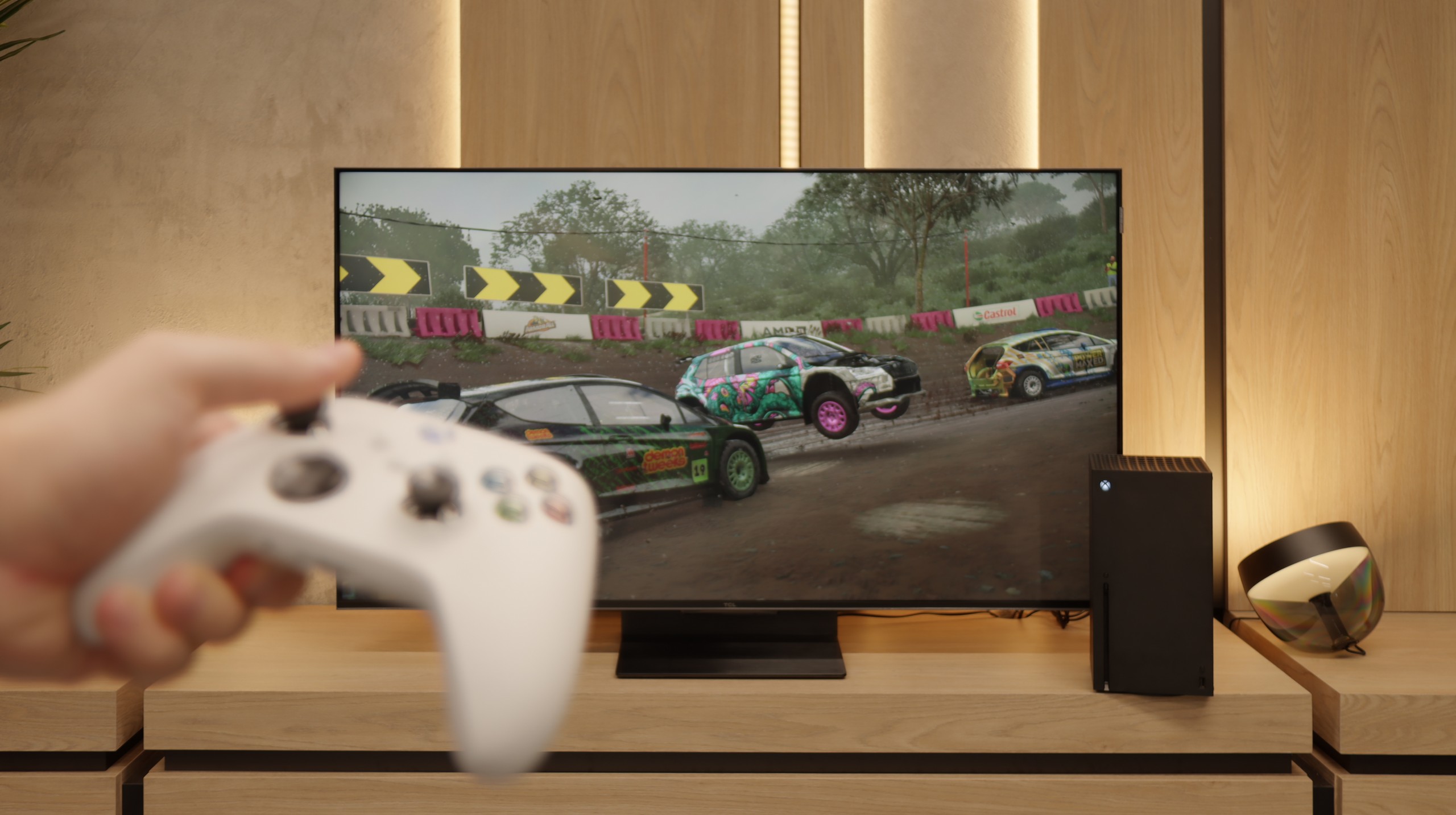

The TCL C7K is a television that on paper appears to be the dream equipment for gamers – and most importantly, it holds up in practice too. To start with good news: there are two full-bandwidth HDMI 2.1 ports, so we can easily connect both a console and a computer, taking advantage of all their capabilities. The panel itself supports a refresh rate of 144 Hz, which gives a significant advantage in dynamic games. There is also a complete set of gaming features: VRR (variable refresh rate), ALLM (automatic low-latency mode), and support for Dolby Vision in games. There is also the HGiG mode, which allows for HDR effects consistent with the creators' intentions. GameBar, an information bar for gamers. It works quickly, looks clear (like a Nintendo console👌), and shows what matters most: the current frame rate, VRR status, and even HDR parameters.
The Philips OLED820 is one of the most complete televisions for gamers. On board, we find practically everything one could expect: two HDMI 2.1 ports with full bandwidth of 48 Gbps (it's a shame there aren't four), variable refresh rate VRR, automatic game mode ALLM, support for Dolby Vision in games, and a good implementation of the HGiG mode. The television handles lower resolutions at 120 Hz with ease, so one can count on considerable flexibility when choosing different picture modes on the console. Philips also includes a Game Bar – a panel that allows changing picture modes, adding a crosshair, or previewing parameters. Although it looks rather clunky and is less polished than that of the competition, it does its job. In practice, therefore, the OLED820, in addition to a full set of four HDMI 2.1 ports, offers nearly everything a gamer could need.
Input lag
9.7/10
10/10
SDR
HDR
Dolby Vision
When it comes to delays, the C7K gives no reason for complaints. In games at 120 Hz, input lag is around 10 ms, which means the television responds really quickly. And interestingly – even in Dolby Vision mode, the result is very similar, which is not always the standard. Good job, TCL. At 60 Hz, the lag does increase a bit, but that's completely normal and affects virtually every television with a refresh rate of 120Hz and above. The most important thing is that everything still runs smoothly and there’s no feeling that something is not responding to our actions.
The input lag on the Philips OLED820 is truly at a reference level. Measurements showed values below 5 ms, placing it among the absolute top televisions available on the market. Even the Dolby Vision mode does not pose any problems in this regard, which is quite a rare phenomenon. In practice, this means lightning-fast response to every movement, no noticeable delays, and complete comfort in dynamic games. In short, superb results that will delight even the most demanding gamers.
Compatibility with PC
8.4/10
6.5/10
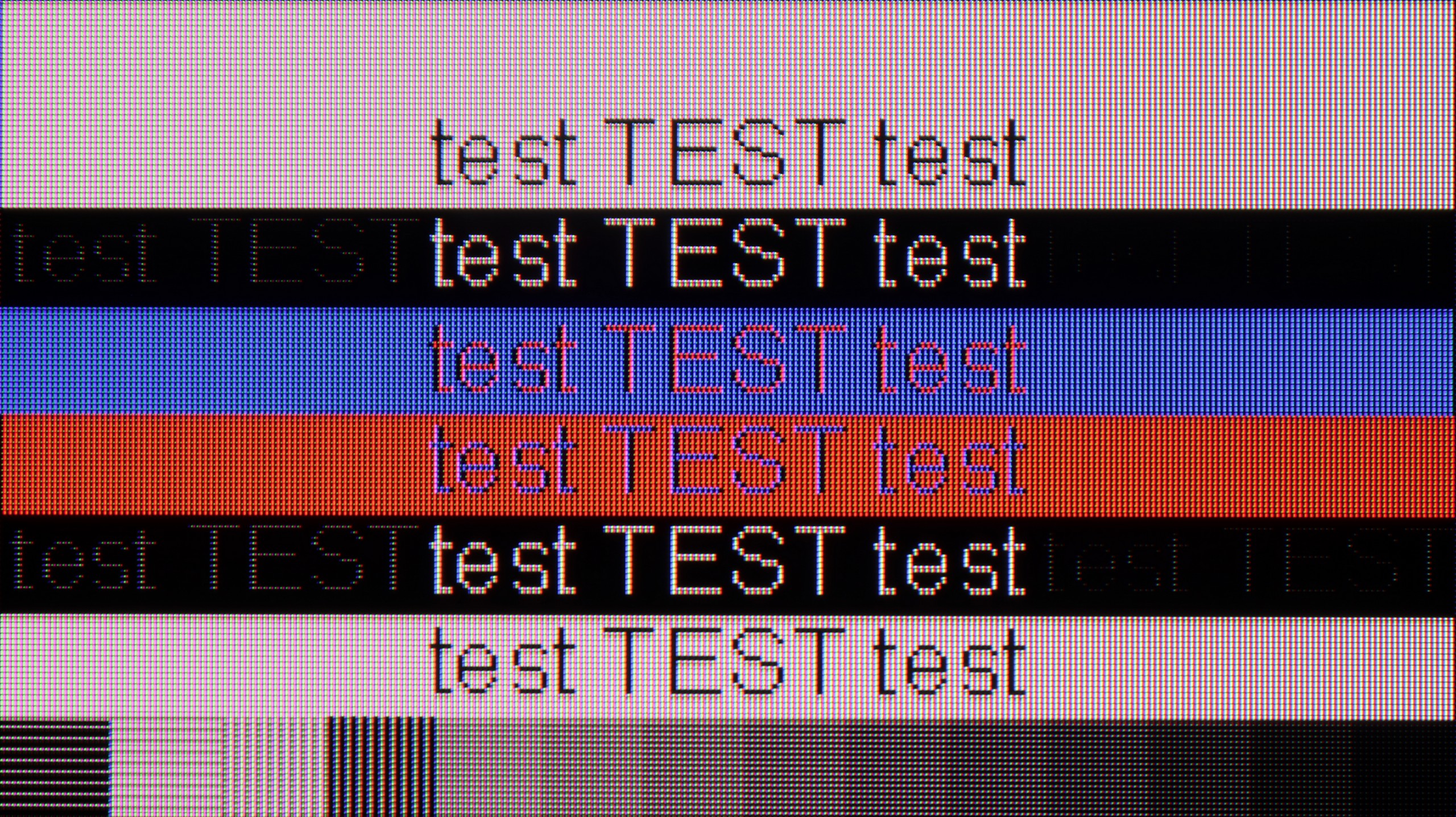

If we are going to connect the C7K to a computer – especially for gaming – there is definitely a lot to play for. We have 4K at 144 Hz, which already sounds great, but if we lower the resolution, the television can even display up to 280 Hz. In e-sports, where every fraction of a second counts, this really makes a difference. On top of that, there is support for G-Sync and FreeSync, so regardless of which graphics card we have – the image will be smooth, without any stuttering or tearing.
However, if we plan to place the C7K on a desk and use it like a monitor, it’s a bit less "rosy." Yes, it supports chroma 4:4:4, so fonts should be sharp, but with very dark letters, there is slight blurriness and dimming of the edges. This is not something that immediately stands out during gaming or watching, but when working with text – it can be distracting. In everyday use – it’s probably nothing to worry about, but if we plan to place a 50-inch screen a meter from our face, it’s worth keeping this in mind.
Cooperation with a PC in the case of the Philips OLED820 varies depending on the application. For gaming, it performs exceptionally well: a high refresh rate of 144 Hz combined with G-Sync support provides the smoothness and responsiveness that other televisions can envy. The situation is less favourable when it comes to text work. The lack of proper implementation of chroma 4:4:4 causes fonts on coloured backgrounds to appear slightly blurred, which significantly reduces work comfort. Therefore, it's hard to recommend the OLED820 as a screen for office work with text or numbers. It's a shame the manufacturer hasn't learned from last year's models and this flaw continues to be repeated.
Viewing angles
3/10
7.6/10
There are no surprises here – the C7K has classic viewing angles for a VA panel. That is: sitting directly in front – it’s excellent. The colours look good, the contrast is strong, everything is in place. But just shifting slightly to the side and it starts to get worse – the image loses saturation, blacks turn grey, and the overall impression diminishes a bit. So, if we plan to watch together with a few people or have a sofa that takes up half the living room – it’s worth seating everyone a bit more centrally. You can watch from the side, but don’t expect miracles – it’s simply a characteristic of VA panels.
The viewing angles in the Philips OLED820 are another advantage that should please you. OLEDs have always been characterised by almost perfect angles, so regardless of where we look from, the image remains clear and legible. Indeed, the classic WOLED matrix does not compare to technologies like MLA OLED or QD-OLED, but it's still hard to find fault here. The angles are simply excellent.
TV efficiency during daytime
6.1/10
5.7/10
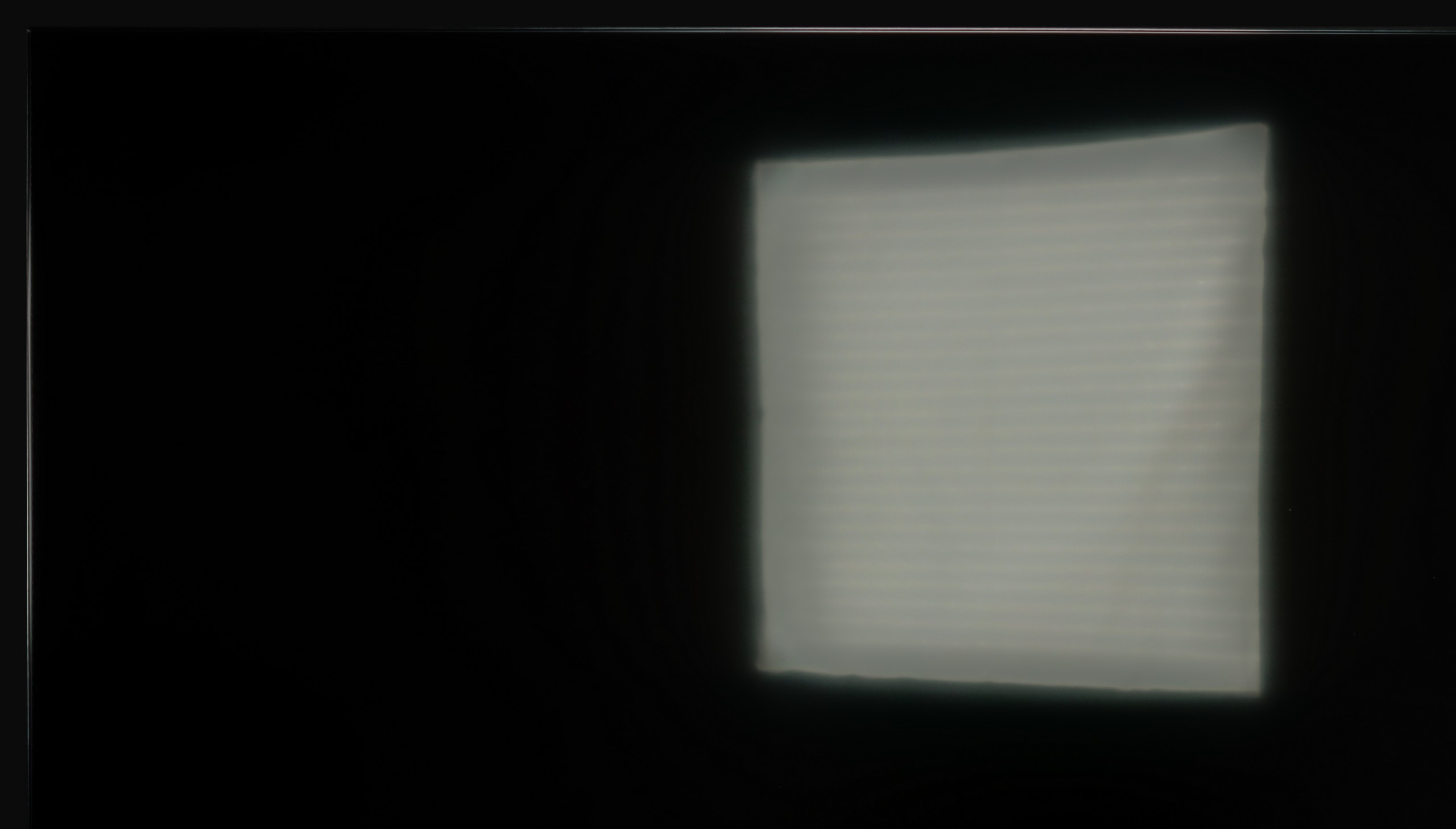



Matrix brightness
Average luminance SDR
Philips OLED820: 345 cd/m2
TCL C7K / QM7K: 475 cd/m2
Fortunately, the TCL C7K performs quite well in bright rooms. The applied panel has a satin finish that effectively suppresses reflections, which means we don't have to worry about lamp or window reflections even on sunny days. Importantly, the colours maintain their intensity and do not wash out, as can happen with weaker matte panels. In terms of brightness, the average for content like YouTube or regular television is slightly below 500 nits. This is not a record-breaking result – for example, the MQLED85 (C765) performs better in this regard. However, for everyday viewing during the day, it should work without major issues, provided we do not plan to place it opposite a south-facing window without curtains.
Details about the matrix
Subpixel Structure:
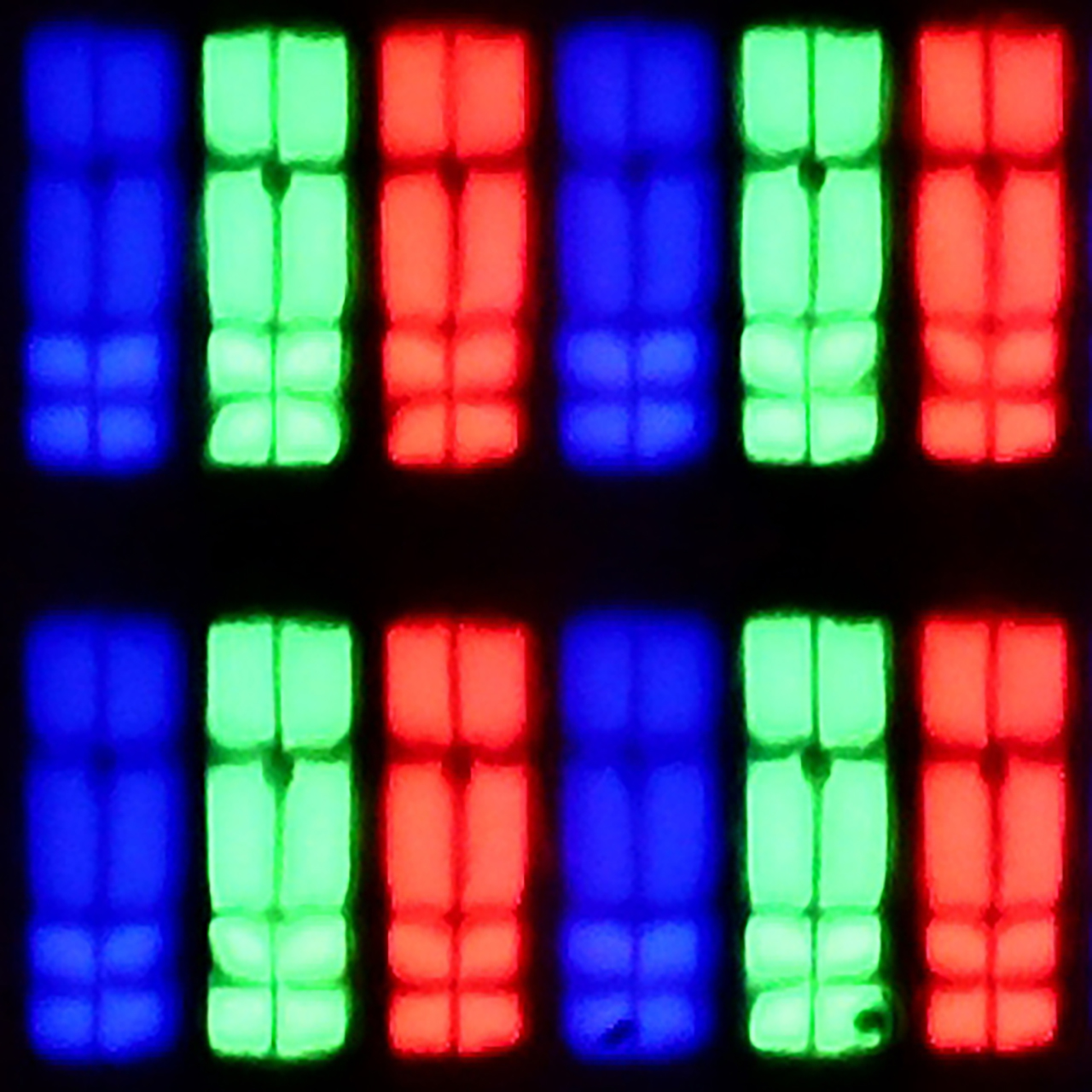
Panel uniformity and thermal imaging:

TV features
7.3/10
6.8/10
- HDMI inputs2 x HDMI 2.0, 2 x HDMI 2.1 48Gbps2 x HDMI 2.0, 2 x HDMI 2.1 48Gbps
- OutputsToslink (Optical audio), eARC (HDMI), ARC (HDMI)Toslink (Optical audio), eARC (HDMI), ARC (HDMI), Mini-Jack (Headphones)
- Network InterfacesWi-Fi 2.4GHz, Wi-Fi 5GHz, Ethernet (LAN) 100MbpsWi-Fi 2.4GHz, Wi-Fi 5GHz, Ethernet (LAN) 100Mbps
- TV receptionDVB-T, DVB-T2, DVB-S, DVB-S2, DVB-CDVB-T, DVB-T2, DVB-S, DVB-S2, DVB-C
Classic features:
- Recording to USB (terrestrial TV)
- Recording programming
- Picture in Picture (PiP)
- RF remote control (no need to aim at the screen)
- Backlit remote control
- Teletext
- Audio only mode
- Bluetooth headphones support
- Simultaneous Bluetooth headphones & TV audio
Smart features:
- AirPlay
- Screen mirroring (Windows Miracast)
- Voice search
- Voice search in native language
- Ability to connect a keyboard and mouse
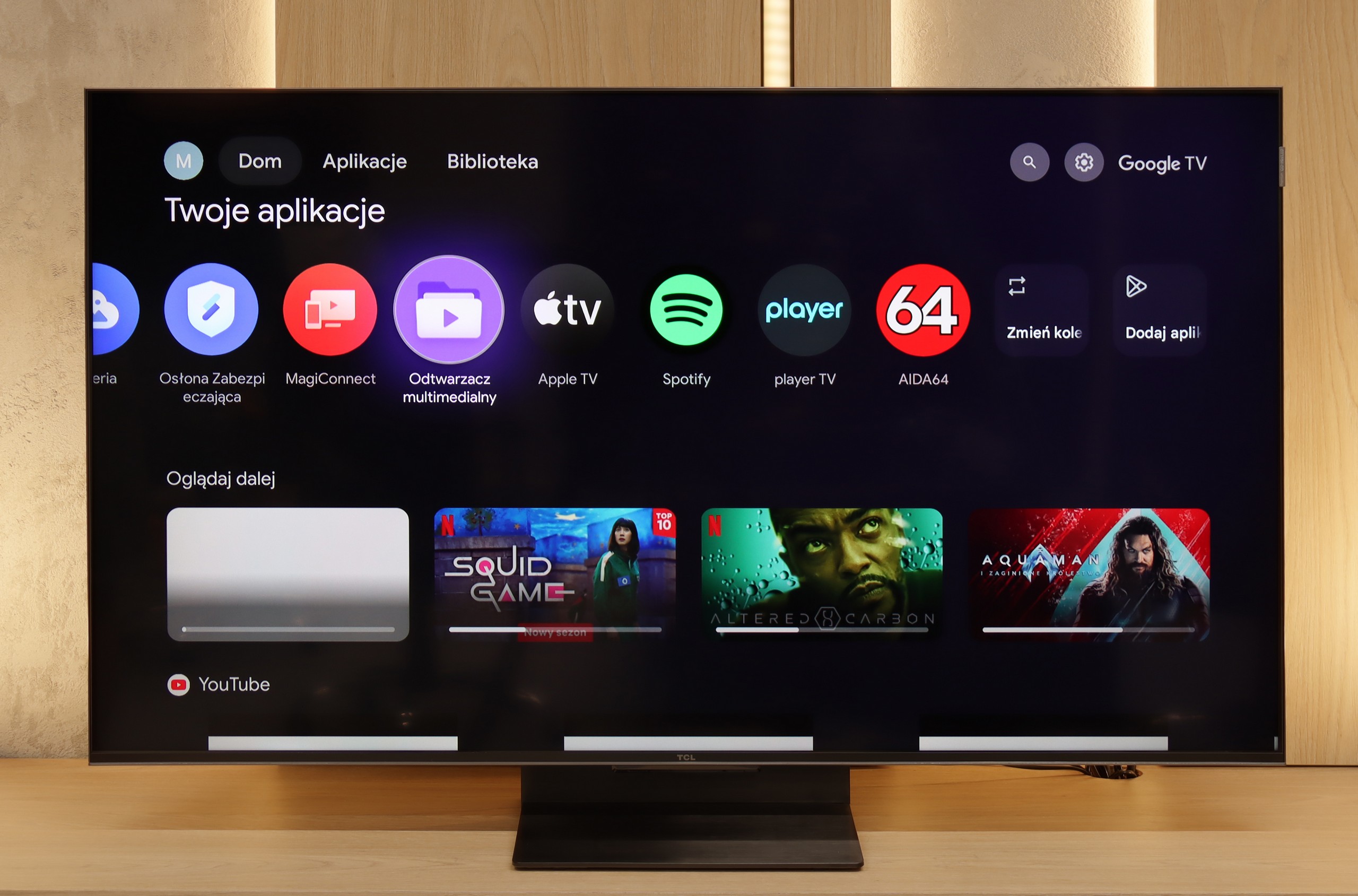
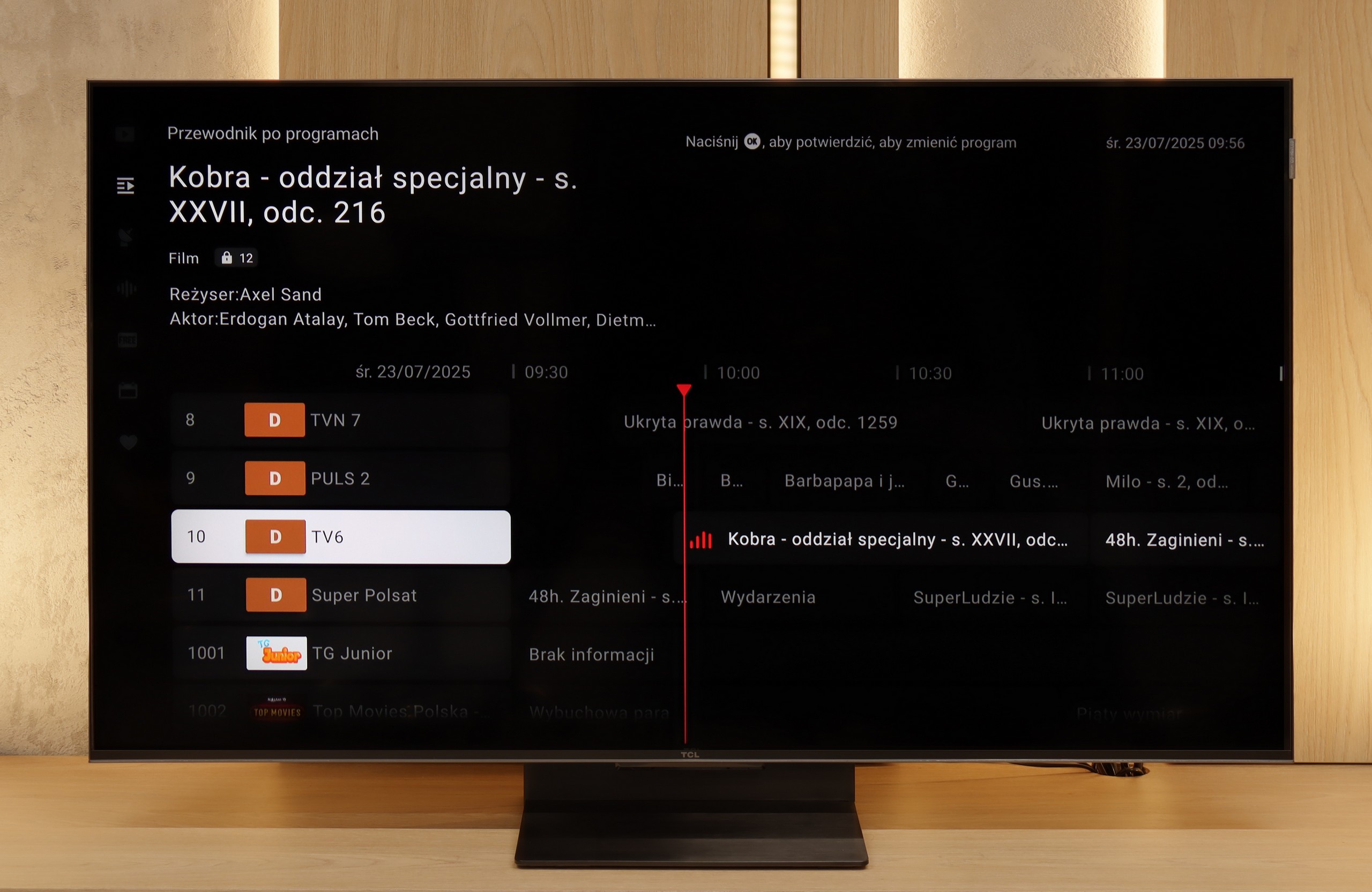
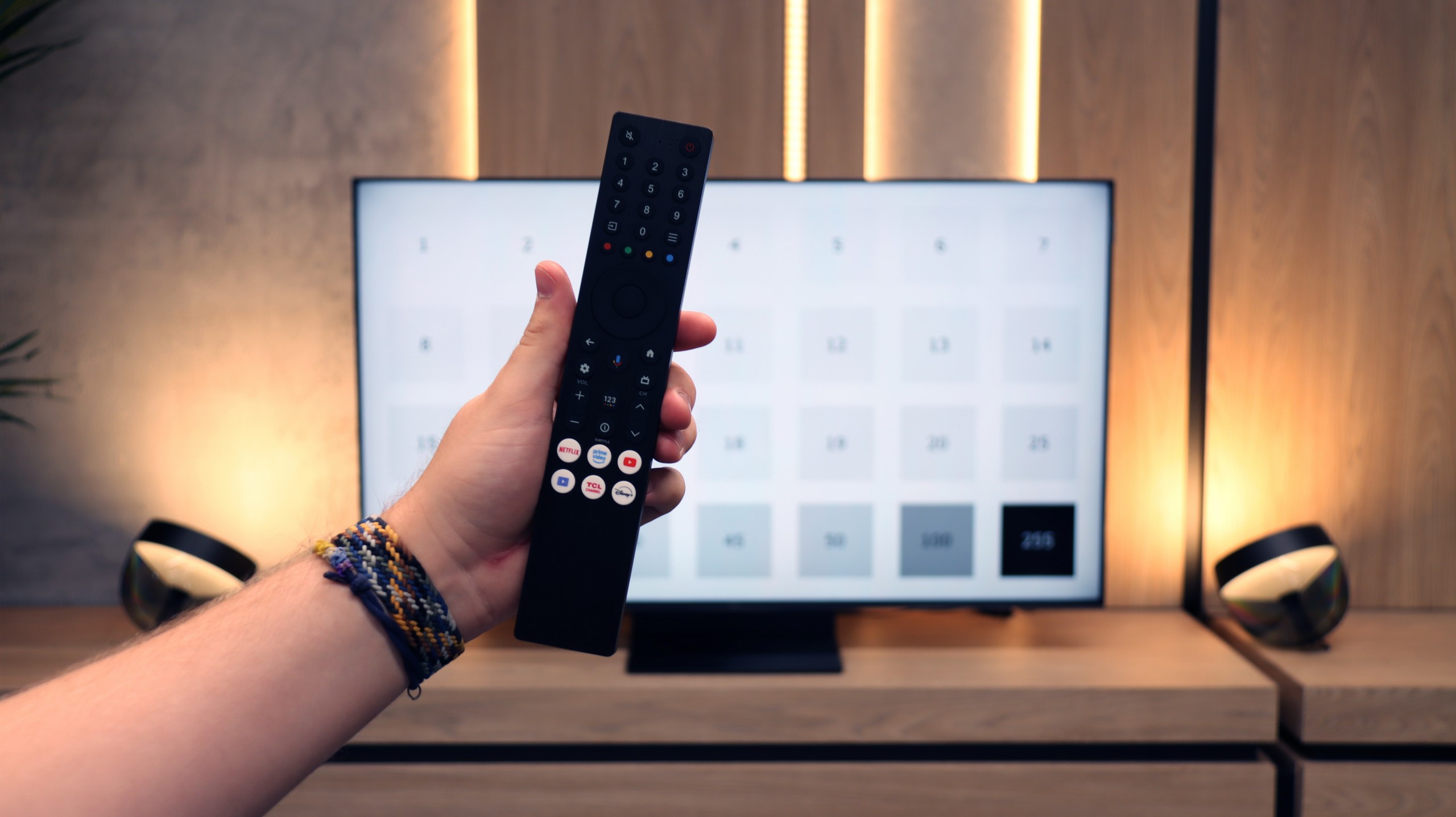
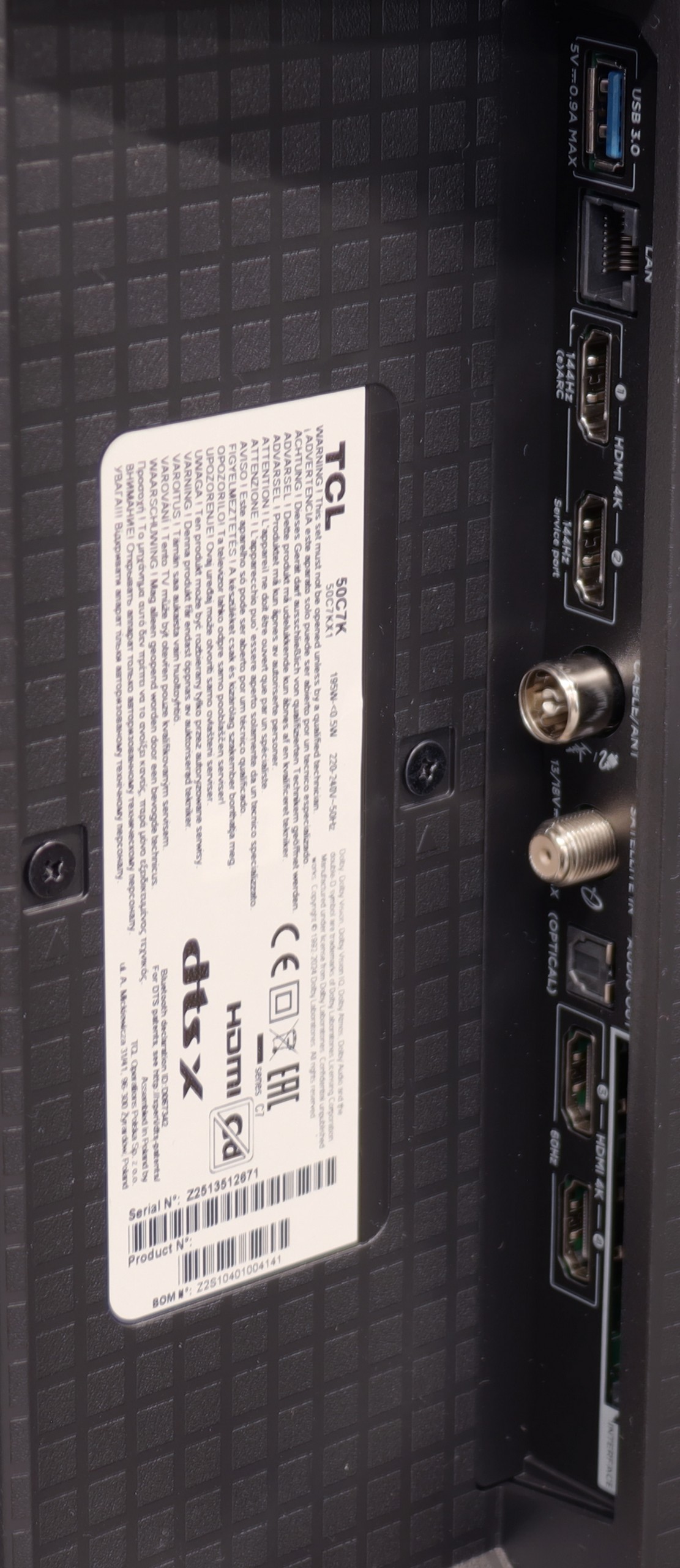




SmartTV: GoogleTV
The greatest strength of the TCL C7K in everyday use is undoubtedly the Google TV system. Thanks to it, we have access to an almost endless library of applications, including some more niche ones that are often unavailable on other platforms. The built-in Google Assistant understands Polish, so we can easily ask what’s on TV, what the weather is like, and even issue a few voice commands to control the television. The presence of Chromecast and AirPlay, which work smoothly and make life easier, is also a plus.
User Functions
On the downside, the classic features are somewhat lacking. Of course, we have the basics – teletext, EPG, and the ability to connect headphones – but that’s about it. There is no USB recording feature or picture-in-picture (PiP) mode, which can still be found among competitors. It’s also worth remembering that Google TV in the TCL edition can sometimes have strangely translated parts of the menu or minor errors in the interface. These are not things that interfere with daily use, but those sensitive to details may notice them.
GoogleTV on OLED820
Philips OLED820 runs on the Google TV system, which immediately places it among televisions that truly offer user freedom. It’s a fantastic platform that needs no introduction – it boasts almost an endless number of applications, from popular VOD services to niche programmes or games. Google TV also allows you to personalise the home screen, tailoring content to our preferences, so the television actually “learns” our viewing style. A significant advantage is also the voice assistant from Google – fast, natural, and effective. It can understand even less obvious questions, and in practice, it works much better than many competitors. Unfortunately, there was a hiccup – the screen mirroring feature simply did not work during testing. This can be considered a minor issue, but in 2025, such things simply shouldn’t happen.
Classic Features of OLED820
When it comes to classic additions, the OLED820 does not try to play conservative notes. On one hand, we get a backlit remote control with a numerical keypad that is quite well organised and easy to use. On the other hand – you have to aim it at the screen, as it operates on infrared, which is more reminiscent of equipment from a decade ago than a modern television. It also lacks some features that are often found in competitors – there is no USB recording from tuners or a PIP mode. A nice touch among the classic solutions is the analogue mini-jack headphone input. This is rare today and could prove useful – whether for a senior with an additional headphone station or for someone who would like to connect older speakers.
AmbilightTV OLED820
One cannot overlook Ambilight, which is a hallmark of Philips. This solution impacts not only the appearance of the television but also the reception of content. The illumination system can be set up in various ways, from a multi-coloured mode that dynamically tracks the image to calmer, static backlighting. We definitely recommend the latter option, as the gentle light behind the screen makes the content being watched, combined with the OLED matrix, look even deeper and more engaging. It’s a simple yet very effective addition that has given Philips televisions character for years.
Playing files from USB
9.2/10
9.5/10
Supported photo formats:
Maximum photo resolution:
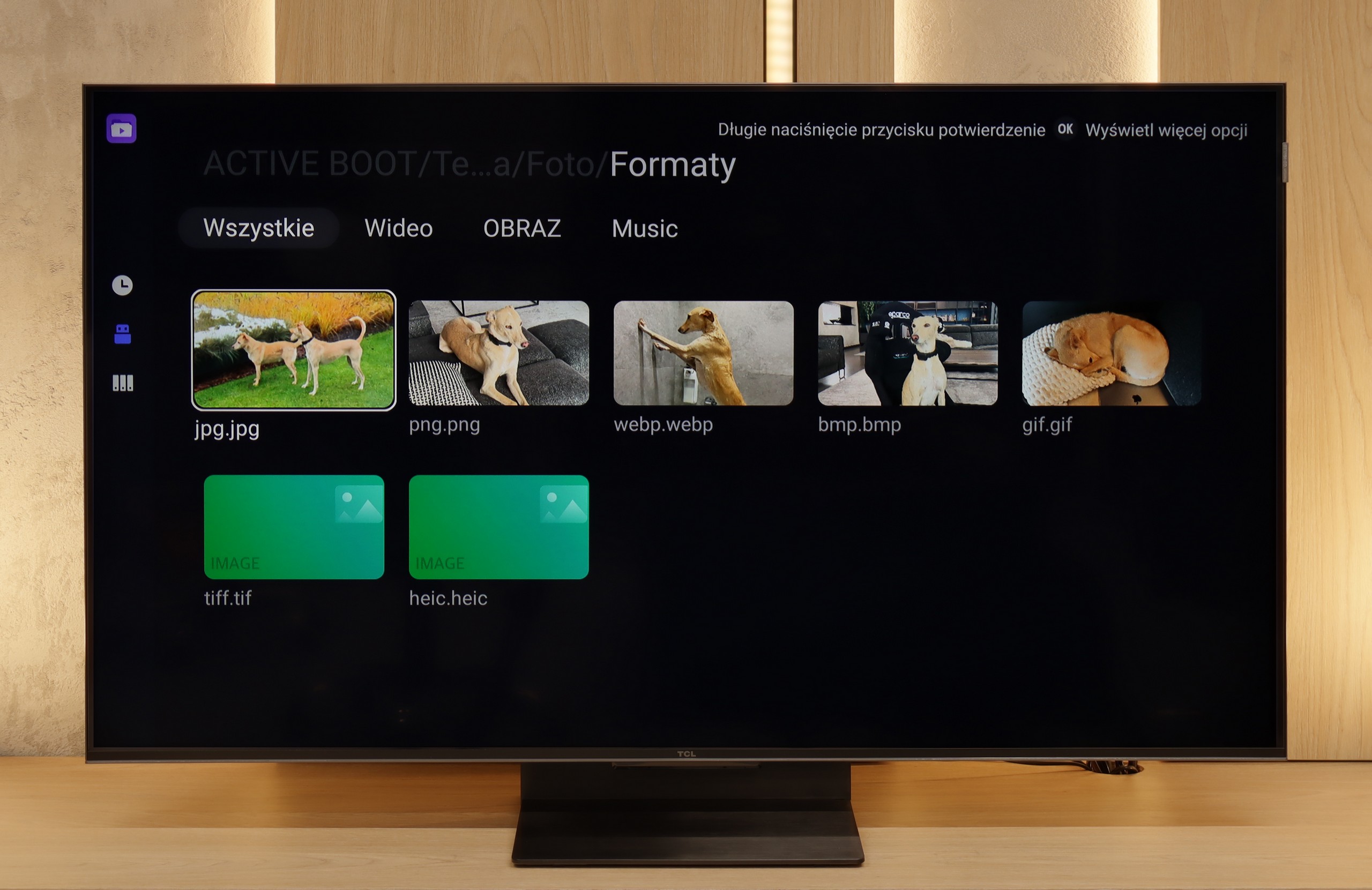

The built-in file player in the TCL C7K performs really very well. It supports most of the most popular audio and video formats, so if we want to quickly plug something in from a USB drive and play it – there should be no problem. Of course, as is usually the case, we can find some minor shortcomings – not every exotic codec will work (Apple's HEIC), not all subtitles will be perfectly synchronised (txt.). However, the biggest advantage of this television comes to the rescue, namely Google TV. Thanks to access to the Google Play store, we can easily install an alternative player, e.g. VLC, and then no files will be a concern for us.
The Philips OLED820 has a built-in file player with USB, which at first glance looks quite clunky, but in practice works surprisingly well. One could even say that it is one of the best built-in players available in televisions. It handles practically every type of file: photos, videos or music, with a few minor exceptions that most of the competition does not support either. And if someone still feels like something is missing, there is always the option of installing the VLC application from the Google Play library, and the problem disappears.
Apps
9.6/10
9.6/10














































Sound
7/10
7.7/10
- Maximum volume76dB81dB
- Dolby Digital Plus 7.1
- Dolby True HD 7.1
- Dolby Atmos in Dolby Digital Plus (JOC)
- Dolby Atmos in Dolby True HD
- DTS:X in DTS-HD MA
- DTS-HD Master Audio
To be honest, we didn’t expect much from the sound of the 50-inch version of the C7K model. Typically, in such sizes, it’s hard to get anything more than thin, flat sound. But here – a pleasant surprise. The audio proved to be really enjoyable, with good clarity and even a slightly discernible bass. This is probably related to TCL's new collaboration with the Bang & Olufsen brand, which is a novelty for 2025. Whether the C7K actually uses the original transducers from the Danish premium brand – we cannot confirm. But the end result still deserves a thumbs up. For a television without a soundbar – it sounds quite pleasant.
The Philips OLED 820 features a built-in 4.1 speaker system with a total power of 70 W. At the back of the casing is a subwoofer, which is responsible for quite solid and deep bass. The classic speakers responsible for the rest of the range are located at the bottom of the television, which means that the sound does not always spread in the way we would want. However, the overall sound can be considered acceptable – series, television programmes, or occasional music listening are satisfactory, with a slight bass support. This should be sufficient for daily use, although we still recommend purchasing even an inexpensive soundbar, which will significantly improve the user experience.
Acoustic Measurements
76dBC (Max)
75dBC
81dBC (Max)
75dBC


